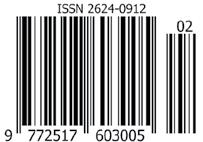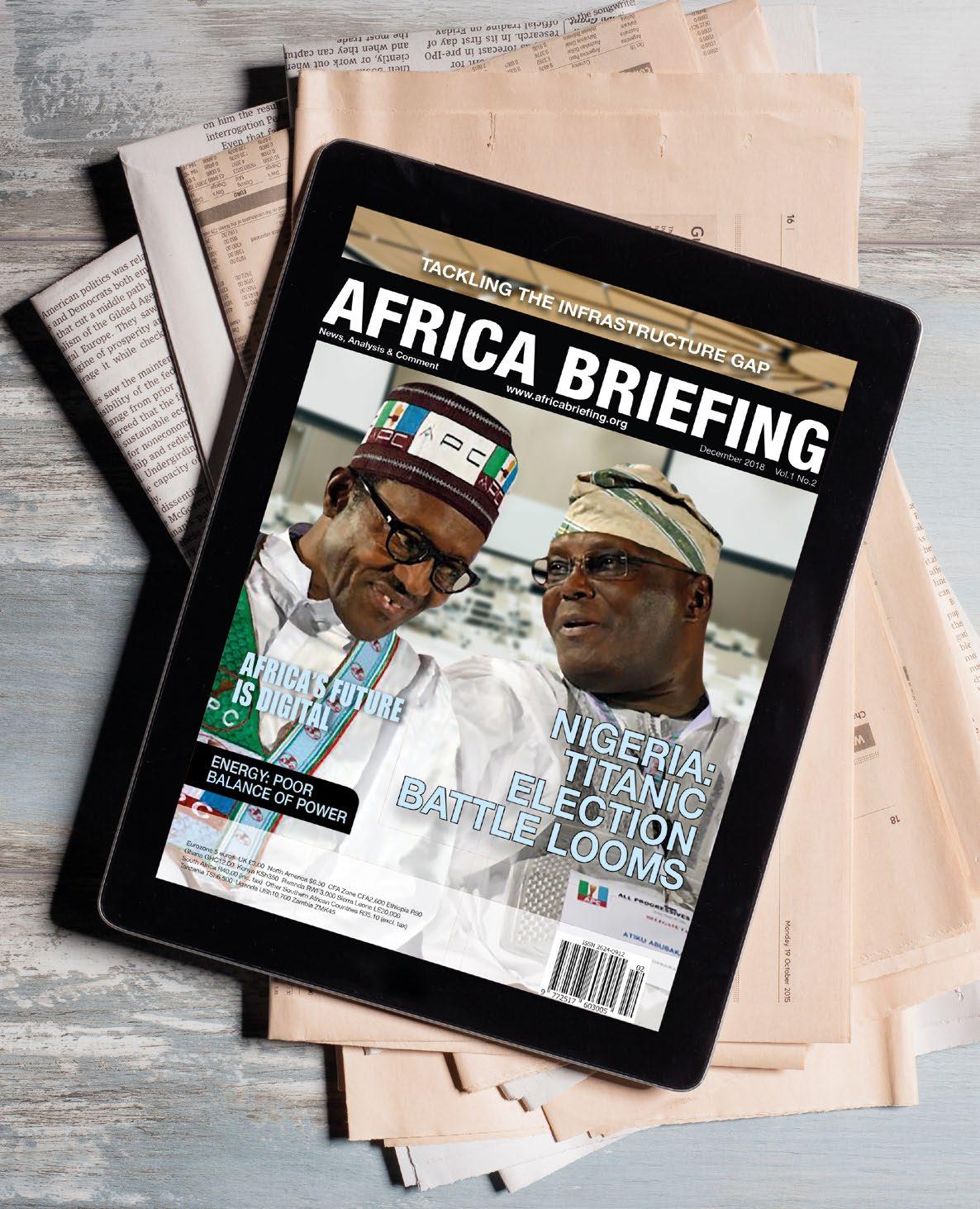










AFRICA is standing on a seismic fault line—not of destruction, but of industrial rebirth. The 2025 Special Mining Report by African Mining Week and Moore Global reads not just as a snapshot of Africa’s resource potential but as a blueprint for rewriting the continent’s economic story.

For centuries, Africa’s minerals were carted off—gold, copper, bauxite, cobalt—traded for promises, not prosperity. But the energy transition is flipping that script. As the world pivots to clean power, Africa has gone from being a pit stop in global supply chains to a pivotal power in the mineral economy. And this time, it's not just about extraction. It's about transformation.
From ore to opportunity
The industrial commodities of tomorrow—lithium, cobalt, graphite—are now found in abundance in Africa. Zimbabwe, Gabon, the Democratic Republic of Congo (DRC), and Tanzania hold the keys to the global energy puzzle. But for the first time, the world’s thirst for these minerals is being met with a new kind of African demand: value retention.
Gone are the days when raw ore was simply exported. Across the continent, gigafactories are rising, smelters are expanding, and the very idea of local beneficiation is no longer aspirational—it’s operational. Morocco’s $6.3bn gigafactory and Zambia’s refined copper projects aren’t isolated miracles; they are early signs of industrial intentionality.
www.africabrie
Publisher Jon Offei-Ansah
Editor Desmond Davies
Contributing
Editors
Prof. Toyin Falola
Tikum Mbah Azonga
Prof. Ojo Emmanuel Ademola (Technology)
Valerie Msoka (Special Projects)
Contributors
Justice Lee Adoboe
Chief Chuks Iloegbunam
Joseph Kayira
Zachary Ochieng
Olu Ojewale
Oladipo Okubanjo
Corinne Soar
Kennedy Olilo
Gorata Chepete
Corridors and carbon credits
IJon Offei-Ansah Publisher
Desmond Davies Editor
Yet Africa's ambitions are bottlenecked by the arteries that carry its minerals. Dilapidated railways and slow ports still haunt many countries. But the Lobito Corridor—a trilateral project backed by the US, EU and African Development Bank—is a striking exception. It’s not just infrastructure; it’s strategy. By slashing export times and lowering costs, it proves that Africa’s industrialisation can be accelerated by smart, integrated logistics.
Designer
Simon Blemadzie
Country Representatives
Angela Cobbinah Deputy Editor
Equally compelling is the emergence of carbon markets as a new revenue stream. African mines are beginning to see themselves not only as resource hubs but as climate assets. From methane capture at Beatrix to Morocco’s renewable energy certificates, a new paradigm is emerging—one where sustainability pays.
Stephen Williams Contributing Editor
Director, Special Projects
Michael Orji
But the market is fragile. The ECOTRUST backlash in Uganda showed that if equity and transparency aren’t prioritised, carbon credits risk becoming the next extractive trap. Africa must lead with integrity, or risk losing this opportunity.
n 2018, six of the 10 fastest-growing economies in the world were in Africa, according to the World Bank, with Ghana leading the pack. With GDP growth for the continent projected to accelerate to four per cent in 2019 and 4.1 per cent in 2020, Africa’s economic growth story continues apace. Meanwhile, the World Bank’s 2019 Doing Business Index reveals that five of the 10 most-improved countries are in Africa, and one-third of all reforms recorded globally were in sub-Saharan Africa. What makes the story more impressive and heartening is that the growth – projected to be broad-based – is being achieved in a challenging global environment, bucking the trend.
Regulation: the double-edged sword
In the Cover Story of this edition, Dr. Hippolyte Fofack, Chief Economist at the African Export-Import Bank (Afreximbank), analyses the factors underpinning this performance. Two factors, in my opinion, stand out in Dr. Hippolyte’s analysis: trade between Africa and China and the intra-African cross-border investment and infrastructure development.
South Africa
Edward Walter Byerley
Top Dog Media, 5 Ascot Knights 47 Grand National Boulevard Royal Ascot, Milnerton 7441, South Africa
Tel: +27 (0) 21 555 0096
Justice Lee Adoboe
Chuks Iloegbunam
Joseph Kayira
Cell: +27 (0) 81 331 4887
Email: ed@topdog-media.net
Much has been said and written about China’s ever-deepening economic foray into Africa, especially by Western analysts and commentators who have been sounding alarm bells about re-colonisation of Africa, this time by the Chinese. But empirical evidence paints a different picture.
Despite the decelerating global growth environment, trade between Africa and China increased by 14.5 per cent in the first three quarters of 2018, surpassing the growth rate of world trade (11.6 per cent), reflecting the deepening economic dependency between the two major trading partners.
The junior miner’s dilemma
Zachary Ochieng
Olu Ojewale
Corinne Soar Contributors
A modern mining sector also demands regulatory clarity. Encouragingly, Zambia’s Integrated Mining Information System and Rwanda’s Inkomane platform show how digitalisation can create trust and attract investment. But the rise of resource nationalism— Zimbabwe’s lithium export ban, Namibia’s rare earth pause, Mali’s equity grabs— underscores a delicate balancing act.
Ghana
Nana Asiama Bekoe
Oladipo Okubanjo
Gloria Ansah Designer
These are not expropriations. They are recalibrations. Africa is no longer begging for a seat at the table; it’s rearranging the chairs. Global investors must adjust their expectations: high returns must come with high local value retention.
Country Representatives
South Africa
Kingdom Concept Co. Tel: +233 243 393 943 / +233 303 967 470 kingsconceptsltd@gmail.com
Nigeria
Empirical evidence shows that China’s domestic investment has become highly linked with economic expansion in Africa. A one percentage point increase in China’s domestic investment growth is associated with an average of 0.6 percentage point increase in overall African exports. And, the expected economic development and trade impact of expanding Chinese investment on resource-rich African countries, especially oil-exporting countries, is even more important.
Not everything is bullish. Early-stage explorers—the lifeblood of mineral discovery—are starved of capital. Their survival now depends on new financing models and partnerships with majors. Without them, the future pipeline may dry up. Discovery, after all, is the start of delivery.
Edward Walter Byerley Top Dog Media, 5 Ascot Knights 47 Grand National Boulevard Royal Ascot, Milnerton 7441, South Africa
Nnenna Ogbu
#4 Babatunde Oduse crescent
Turning leverage into leadership
The resilience of African economies can also be attributed to growing intra-African cross-border investment and infrastructure development. A combination of the two factors is accelerating the process of structural transformation in a continent where industrial output and services account for a growing share of GDP. African corporations and industrialists which are expanding their industrial footprint across Africa and globally are leading the diversification from agriculture into higher value goods in manufacturing and service sectors. These industrial champions are carrying out transcontinental operations, with investment holdings around the globe, with a strong presence in Europe and Pacific Asia, together account for more than 75 per cent of their combined activities outside Africa.
Tel: +27 (0) 21 555 0096 Cell: +27 (0) 81 331 4887 Email: ed@topdog-media.net
Ghana
Technology is the final accelerator. From blockchain tracing cobalt in real time to AI improving worker safety, digital tools are levelling the playing field. But geopolitics looms large. Trump’s tariffs and the EU’s Critical Raw Materials Act are re-routing global supply chains away from China—and toward Africa. The Lobito Corridor isn’t just logistics; it’s leverage.
Nana Asiama Bekoe
Kingdom Concept Co. Tel: +233 243 393 943 / +233 303 967 470 kingsconceptsltd@gmail.com
Nigeria
Isheri Olowora - Isheri Berger, Lagos Tel: +234 803 670 4879 getnnenna.ogbu@gmail.com
Kenya
Patrick Mwangi
Aquarius Media Ltd, PO Box 10668-11000
Nairobi, Kenya
A survey of 30 leading emerging African corporations with global footprints and combined revenue of more than $118 billion shows that they are active in several industries, including manufacturing (e.g., Dangote Industries), basic materials, telecommunications (e.g., Econet, Safaricom), finance (e.g., Ecobank) and oil and gas. In addition to mitigating risks highly correlated with African economies, these emerging African global corporations are accelerating the diversification of sources of growth and reducing the exposure of countries to adverse commodity terms of trade.
Taiwo Adedoyin MV Noble, Press House, 3rd Floor 27 Acme Road, Ogba, Ikeja, Lagos Tel: +234 806 291 7100 taiadedoyin52@gmail.com
That leverage, however, is only as powerful as Africa’s leadership. The continent must rise not just as a supplier but as a shaper. It has the minerals. It has the momentum. But without infrastructure, skilled labour, regulatory consistency and community engagement, Africa risks letting this moment slip into history like so many others.
Kenya
This makes me very bullish about Africa!
The future isn’t just in the ground. It’s in how Africa moves, processes, governs—and dreams. The next five years will decide whether the continent is merely part of the clean energy future—or defining it.

Naima Farah Room 22, 2nd Floor West Wing Royal Square, Ngong Road, Nairobi Tel: +254 729 381 561 naimafarah_m@yahoo.com
Africa Briefing Ltd
2 Redruth Close, London N22 8RN United Kingdom Tel: +44 (0) 208 888 6693 publisher@africabriefing.org
Tel: 0720 391 546/0773 35 41
Email: mwangi@aquariusmedia.co.ke
©Africa Briefing Ltd
2 Redruth Close, London N22 8RN
United Kingdom
Tel: +44 (0) 208 888 6693 publisher@africabriefing.org
Critical minerals: a case for better control now
A special institution in Ghana Living Nkrumah’s pan-African dream
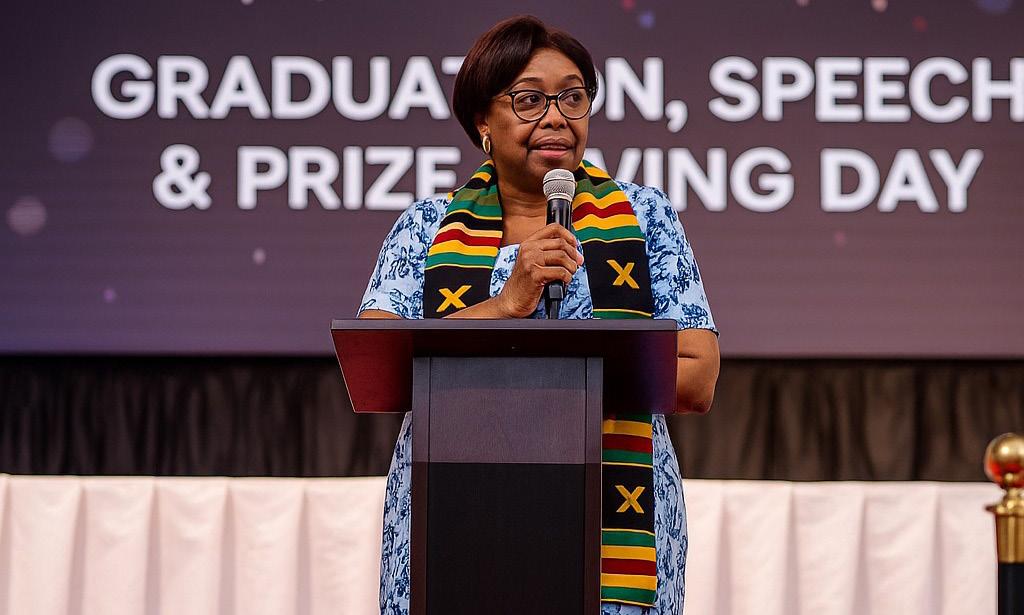
Inspired by the visionary ideals of Ghana’s leader at independence, the SOS-Hermann Gmeiner International College in Tema seeks to foster unity, intellectual empowerment and a sense of shared destiny among Africa’s youth. Desmond Davies looks at how the institution is nurturing leaders not just to excel academically, but also to adopt the responsibilities of citizenship in an interconnected continent
Voices of the future
Five students from across the African continent tell Africa Briefing about their experiences at SOS-HGIC and how the institution has prepared them for university and life beyond
6 07 08 11 16
Africa fuels the clean energy age
Africa’s mineral fortunes are being reimagined in the age of climate action. Jon Offei-Ansah explores how clean energy demand, ESG reform and digital transformation are turning the continent into a critical mineral powerhouse.

South Sudan on a slippery slope to renewed violence
The security situation in the beleaguered country is deteriorating in the midst of a worsening economic crisis, as ordinary citizens in the embattled regions struggle to survive, according to Concerned Citizens’ Network for Peace
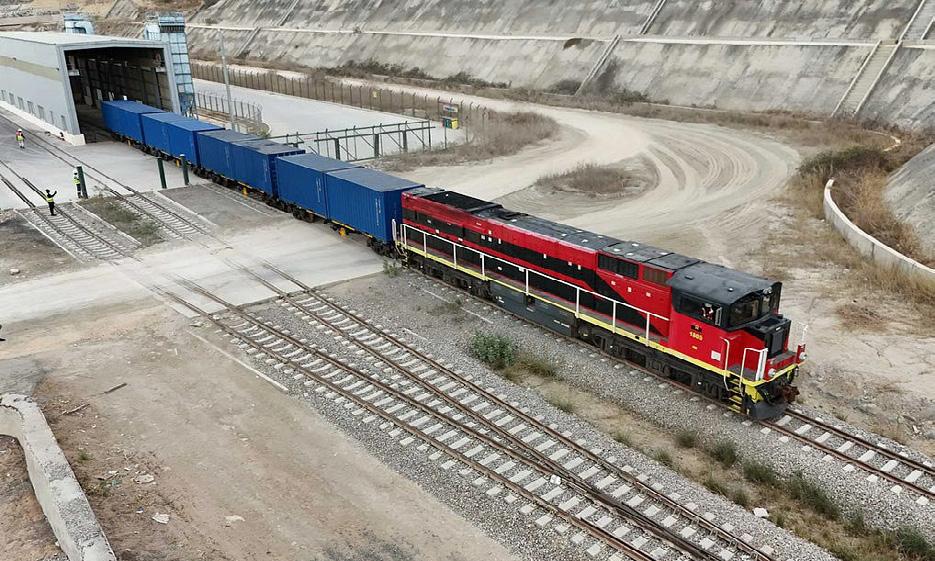
30 32 22
Lobito to Lagos: corridors reshape trade Africa's dollar break-up starts with yuan
African retailers must prepare for next wave of cyberattacks
From the Dangote refinery scale-up to the Lobito railway, WAGP gas link and EAC’s digital customs, new corridors are cutting costs, speeding clearance and shifting market power across the region, writes Dorothy George
As the continent’s merchants accelerate digital transformation, the recent assault on the computer networks of two of the UK’s biggest retailers should serve as a crucial case study on what can go wrong when uptime – not just data – is under attack
Cairo’s yuan pact with Beijing signals a seismic shift in Africa’s currency politics — and China’s quiet campaign to dislodge the dollar is picking up speed, writes Brendan Odoi
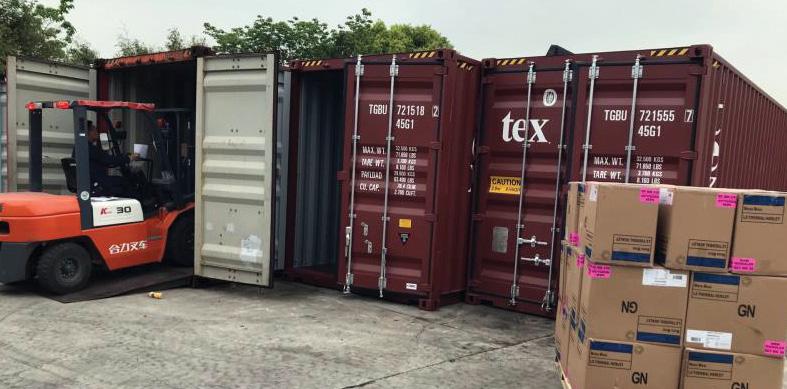

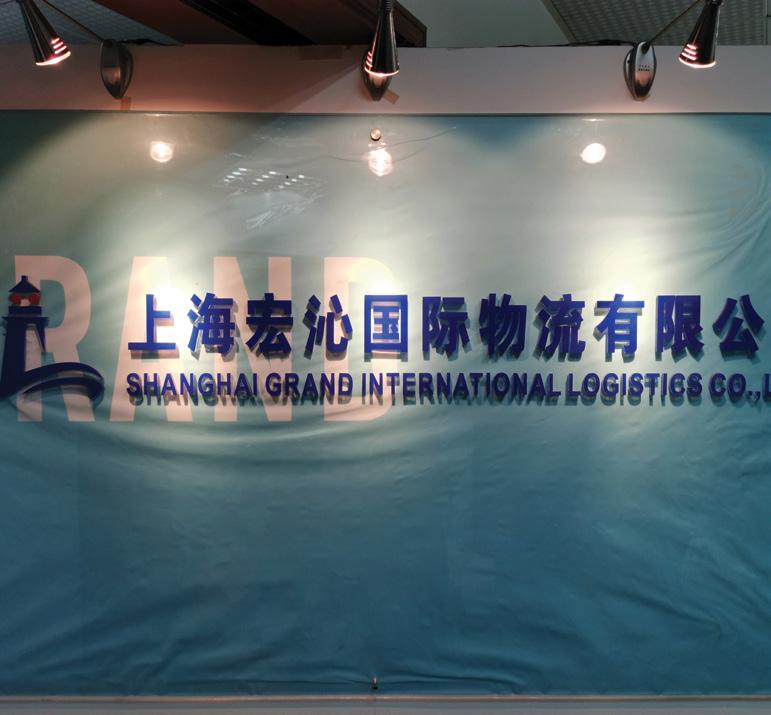
Established in 2002, Shanghai Grand International Co., Ltd. offers a variety of shipping and transportation options via air, sea and ground. Our company is based in Shanghai, China, with branches across the nation. Ranging from customs declaration, warehouse storage, containers and consolidated cargo shipping we have a large array of options to meet your needs.
In addition to being approved and designated by the Ministry of Transportation of China as a First Class cargo service provider, we have also established excellent business relations with major shipping companies including Maersk, CMA, ONE, SM line, and
C.E.O President.
Mr, Felix Ji

EMC over the past 15 years. In addition we have also built long term business relations with major airline cargo departments. In order to expand our global operation, we are looking for international partnerships to work together in this industry. Should you ever import any goods from Peoples Republic of China please ask your exporter and shipper to contact us. We will provide our best service to you.
Room 814, 578 Tian Bao Lu, Shanghai, Peoples Republic of China
E-Mail: felix@grand-log.net phone: 86-13501786280
AS the global economy undergoes a rapid transition – driven by the green energy revolution, digitalisation and rising technological demand – critical minerals have emerged as strategic assets that are highly sought by states and corporations alike. These resources, essential for batteries, renewable energy technologies and advanced manufacturing, have become focal points not only for industrial development but also for geopolitical competition.
The complexity of these supply chains and the diversity of actors involved – from miners and traders to manufacturers and end-users – demand integrated approaches. Stakeholders are calling for greater transparency, collaborative monitoring and the adoption of new technologies to trace minerals from extraction to final product. At the same time, there is heightened awareness of the social and environmental costs that can result from poor regulation or unchecked competition.
Such concerns have spurred calls for greater international coordination and dialogue, particularly as mineral-rich regions in Africa, South America and Asia face mounting external pressures. The link between resource governance, security and sustainable development is especially acute in areas where state authority is weak and conflict dynamics are complex. Here, the challenge is not only to improve oversight and regulation, but also to empower local communities and ensure that the benefits of mineral wealth are distributed equitably. Increasingly, there is recognition that effective mineral governance must address both global market forces and on-the-ground realities, including human rights protections, anticorruption measures, and investment in local capacity-building.
In response, international organisations and national governments have begun to pilot new frameworks for cooperation, data sharing and enforcement. Mechanisms for certification and traceability – often implemented in partnership with industry and civil society – are gaining traction as tools to counter illicit flows and build consumer trust. Yet, these efforts must overcome significant obstacles: fragmented legal regimes, limited
technical capacity and the persistent influence of non-state actors who profit from opaque trade networks.
In African countries rich in such minerals, questions of ownership, extraction and oversight are increasingly central to debates on sustainable development, security and international cooperation.
In this mix, US President Donald Trump is playing a cat-and-mouse game with African countries over control of critical minerals that American industries need desperately. On the one hand, he is pushing for a peace deal in the embattled eastern region of the critical mineral-rich Democratic Republic of Congo. The hope is that if Trump can swing it, he will use the opportunity to open the doors for US companies to exploit the DRC’s critical minerals.
On the other hand, he is antagonising the same African countries whose minerals he has his eyes on. By slapping visa bans and restrictions on 36 countries, including 25 in Africa, he has caused Africans to ponder why the US should have easy access to their critical minerals to fuel its tech, energy and defence industries.
In this light, it would make sense for critical mineral-rich African countries to now start taking control of the extraction of their resources and how much they earn from them. They need to collectively
It is now time for African countries to do the same. And it is not just about controlling the prices for their critical minerals. They must ensure that they do not just export raw material to be used in producing goods that are sold to Africa costing 10 times or more than the money African countries made from their natural resource exports.
Indeed, African governments have been seeking to maximise revenues and economic benefits from the extractive sector through measures such as increased taxes, export bans, investment incentives, state participation and local content policies. However past commodity booms have yielded limited benefits for many countries due to corruption and weak governance, highlighting the need for stronger safeguards.
Opaque agreements remain a major risk, facilitating illicit financial flows that cost Africa an estimated $90 billion annually. Undisclosed value addition agreements, resource-backed loans and mineral-for-infrastructure deals can further undermine good governance and efforts to sustainably manage debt. These are issues that an African-led critical minerals body should be able to tackle so that its members get the best deal – just as OPEC member countries.
The urgency to establish robust frameworks for the management of
African critical minerals producers must collectively control global market prices of their resources ‘ ’
negotiate better terms that would put them in control of global market prices of their critical minerals.
This is now an opportune time for African countries to come together and form a cartel – along the lines of OPEC – to start benefiting a lot more from their natural resources. The world saw how OPEC – after the Arab-Israel war of 1973 – transformed the way the oil-rich Arab nations took charge of their resource and have never looked back.
Africa’s critical minerals has only intensified. For African countries that have huge critical mineral reserves, they should be resilient and coordinate their plans to ensure that they get the best deal.
Thus, a united front of African critical mineral producers is the best way to maximise the benefits. There will be resistance from Western countries, but there are other nations that will step in and work with a united Africa trying to finally make the most of its natural resources. AB
THE SOS-Hermann Gmeiner
International College (SOSHGIC) in Tema, Ghana, is an institution that has bucked the trend in Africa since it took off in 1990. Over the last 35 years it has produced a great number of pupils who have made good in life; many of whom came from socially disrupted backgrounds.
The first batch of students came from Ethiopia. They were the traumatised survivors of the devastating famine that engulfed their country in 1984. It left many children orphaned and stuck in camps. The global response to the famine – Band Aid, Live Aid and all that – was tremendous.
That was when the Tema institution quietly stepped in – bringing in orphans from the SOS Children’s Village in Ethiopia to provide them with education and, more importantly, a stable environment.
Forty years on, while there has been a Live Aid revival in the UK, SOS-HGIC, Tema is still providing succour for students from Ethiopia and, of course, other parts of Africa. It has come a long way.
I am told that in its earliest days, the College faced daunting odds. Resources were scarce, expectations were high, and each day presented fresh challenges. Staff improvised with what little they had, often working late into the night to prepare lessons, organise activities and ensure the well-being of each student.
Students, in turn, learned to be resilient and adaptable, helping to forge a community spirit that would become the bedrock of the institution. Stories abound of those early cohorts huddled over books in dimly lit rooms, sharing laughter and anxiety in equal measure and forging bonds that would last a lifetime.
Out of this adversity, a distinctive identity began to emerge.
Margaret Nkrumah epitomised the spirit of Pan-Africanism. She was principal of the College from 1990 until 2008 and now chairs the board of the institution.
Under her, the College matured, its reputation for tenacity grew, drawing the
attention of families seeking a nurturing but challenging environment for their children. Innovations in teaching and mentorship took root and the bonds between staff and students deepened.
She ensured that the College’s commitment to holistic education meant that academic lessons were often woven together with practical life skills and character-building experiences. Slowly, stories of perseverance gave way to stories of quiet triumphs: the first cohort’s academic successes, the launch of new traditions and the sense that, together, they were building something enduring and remarkable.
This is quite obvious from the responses that Africa Briefing got from five members of the Class of 2025, which you can read in this edition. They are clearly focused on what they want to do with their lives and how to make Africa better in the future.
They speak of “effective communications”, “thinking critically” and
The
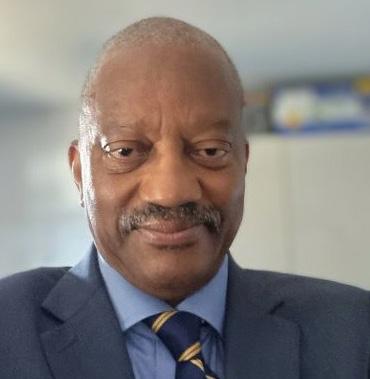
of SOS-HGIC imbibing the ethos of effective communications. My hope is that they are not frustrated by systems that are not moving Africa forward.
After all, these students are supposed to direct the future of the continent. They should be given free rein to put their learning to effective use.
Indeed, SOS-HGIC has been doing sterling work in preparing leaders that will fit into the Africa Union’s Agenda 2063: The Africa We want. The AU sees this as a “blueprint and masterplan for transforming Africa into the global powerhouse of the future”.
Formulated in May 2013, the AU noted that “the declaration marked the re-dedication of Africa towards the attainment of the Pan African Vision of an integrated, prosperous and peaceful Africa, driven by its own citizens”.
The big question is: who are the citizens who will drive this reform forward? Naturally, it is the young
how “to grow as a leader”. They are on the right path. They have pointed out what I see as the failings of most of the current crop of African leaders.
Communicating effectively with citizens is the basis of strong leadership. How can a leader nudge his people to follow the right path if no relevant information is coming from the leadership?
And when I talk about effective communication, I do not mean banal social media postings. Serious leaders know this, and they are now turning again to traditional media to do the job.
Communications officers who feel that they have achieved something by shielding African politicians from the media are doing their countries a great disservice. One, though, is happy to see the products
Africans of today who are receiving the sort of education, training and preparation from institutions such as SOS-GHIC in Tema.
Africa has the youngest population in the world with more than 400 million young people aged between the ages of 15 to 35 years. In this regard, the AU has developed several youth development policies and programmes at continental level aimed at ensuring the continent benefits from its demographic dividend. The policies include the African Youth Charter, Youth Decade Plan of Action and the Malabo Decision on Youth Empowerment, all of which are implemented through various AU Agenda 2063 programmes.
Thus, SOS-HGIC is moving in the right direction to foster Agenda 2063. AB

Inspired by the visionary ideals of Ghana’s leader at independence, the SOSHermann Gmeiner International College in Tema seeks to foster unity, intellectual empowerment and a sense of shared destiny among Africa’s youth. Desmond Davies looks at how the institution is nurturing leaders not just to excel academically, but also to adopt the responsibilities of citizenship in an interconnected continent
SINCE its inception in 1990, the SOS-HGIC has absorbed a community of students who come from diverse backgrounds, brought together by a common goal: to uplift Africa through education and collaboration. The College has fostered a vibrant and inclusive learning environment where students are encouraged to strive for personal growth, intellectual curiosity and a sense of responsibility toward their communities.
The College embraces cultural diversity and encourages students to develop a keen sense of identity and leadership. By fostering a nurturing environment and promoting global citizenship, it aims to cultivate responsible individuals equipped with the values and skills needed to contribute meaningfully to their communities and the wider world.
Addressing the graduation of the Class of 2025 on June 7, SOS-HGIC Principal Eliz Dadson, captured the moment when she noted: “As you step into a rapidly changing world shaped by artificial intelligence, remember: it’s not the technology that defines the future — it’s how we choose to use it.”
Although the students should engage with new technology, they should do so “with wisdom, integrity, and heart. The skills you have honed here, curiosity, ethical thinking, and self-discipline, will serve you far beyond the classroom”.
Dadson added: “Although this is a graduation, it is not the end. Learning does not stop at the gates of HGIC. In fact, in a world that won’t remain still, learning becomes your superpower. Go forward boldly.”
Dr Margaret Nkrumah, who chairs the College’s board, has been there from the start. Looking back, she noted that “this school is unique”. She explained: “It is a completely African school in nature and content, run by Africans and doing one of the most rigorous courses in the world.
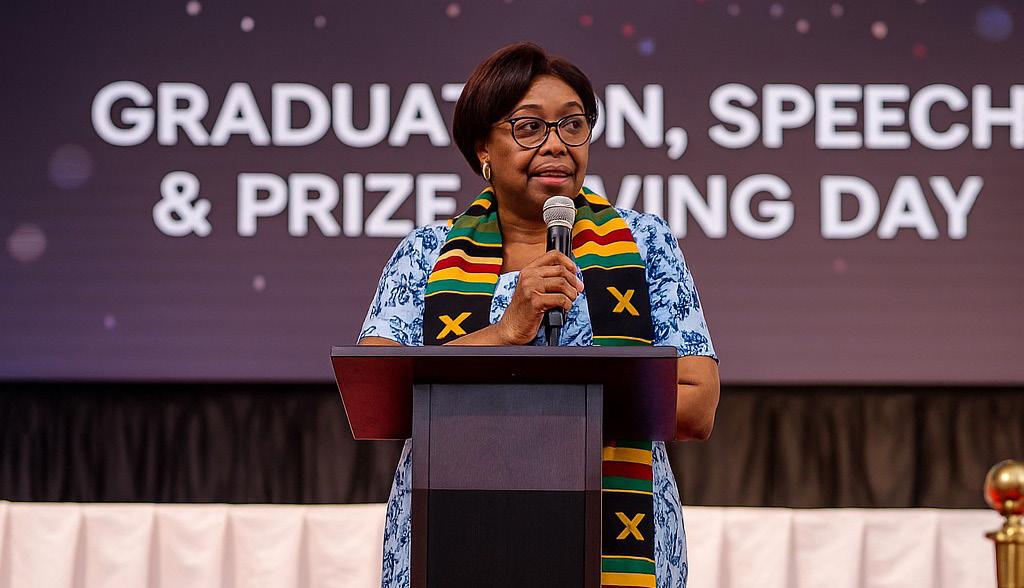
‘it
“There are not many international schools of this nature. Secondly, our students are carrying our name with them everywhere they go because of the way they comport themselves.”
The genesis of the institution, though, is not in Ghana. It materialised from SOS Kinderdorf International, the worldwide private welfare organisation dedicated to providing a family life and education for orphaned and destitute children. It was established in Austria in 1949 by Hermann Gmeiner to provide for children orphaned by World War II in Europe. There are now over 130 SOS Villages around the world.
SOS-HGIC Ghana was established in 1990 to provide a school of academic excellence for students from SOS Children's Villages from all over Africa and from Ghana itself. This was done in the “spirit of Pan-Africanism and an awareness of the social needs of society and to help them gain admission into the best universities”.
Rooted in its pan-African ethos and commitment to service, the College continually reviews and refines its strategic aims to align with the evolving needs of
its student body and the demands of a globalised society. The deliberate focus on nurturing talent from diverse backgrounds ensures a vibrant learning community, where students build lasting connections and broaden their horizons beyond academic pursuits.
The College’s core objectives guide all operations, including teaching, extracurricular activities and community partnerships. With a strong emphasis on inclusion, academic integrity and leadership development, the College remains steadfast in its pursuit of excellence and its dedication to empowering future changemakers.
Driven by a spirit of inclusivity and academic ambition, the objectives emphasise the identification and cultivation of talent – regardless of students’ backgrounds – ensuring that every child with the potential for advanced learning is given robust opportunities to thrive. In addition to academic rigour, the objectives highlight the necessity of preparing students for admission to leading universities worldwide, equipping them with the skills and confidence required to excel in competitive environments.

At the heart of these objectives was a commitment to building not just academic proficiency, but character, vision and a sense of purpose. The founders believed that education should not merely fill minds with knowledge but ignite within each student the confidence and curiosity to shape the world around them. The College was established as a diverse community where students from various backgrounds could learn and grow together.
In its formative years, the College attracted families and educators who shared a belief in the transformative power of learning. There was a palpable sense of pioneering spirit: staff and students alike accepted the challenges of establishing new traditions and setting standards of excellence. The vision was ambitious, but the determination to see it realised was unwavering. Every classroom discussion, extracurricular activity and community service project was seen as a building block towards a brighter future for Africa and beyond.
For Dr Nkrumah, it has not been all plain sailing for the College. But through sheer determination, it has now established itself as an educational institution that places equal weight on academic achievement, leadership growth, ethical conduct and social responsibility.
“Looking through the objectives for which this college was established, I could confidently say we have achieved each and every one of them,” she said, noting that it started off as a pilot project that had led to similar establishments, such as in Costa Rica, “as the direct result of the success of this one”.
How did the institution weather the storm in the early days? Dr Nkrumah spoke of the support SOS-HGIC Tema received from the log-serving President of SOS Children’s Village, Helmut Kutin, who died in April 2024. “The confidence of Mr Kutin in this College, and the unwavering support we received from him in those crucial teething years were of significant importance to our survival.
“Also, there was a tenacity of purpose and a clear vision of what I wanted to achieve. I was under no pressure to keep my job by pleasing someone, so I could fight for what I believed was right.
“It was important to establish procedures based on principles and hold on to those standards in the face of pressure. This proved extremely helpful to other staff,” she added.

The Tema institution noted that its “journey was, in many ways, inseparable from the larger aspirations and struggles of its parent organisation”. It added: “The vision that had taken root in local soil was echoed by a broader movement, as champions within SOS Kinderdorf International considered how best to serve the unfolding needs of children across the continent.
“At times, this meant contending with scepticism from those unaccustomed to such ambitious undertakings or navigating prolonged periods where bold ideas were set aside in the face of daunting logistical and financial barriers.”
The founders believed that education should not merely fill minds with knowledge but ignite within each student the confidence and curiosity to shape the world around them. Thus, the College was conceived as more than just a place of instruction – it was to be a living community, rich in diversity, where students from different backgrounds could learn from one another and grow together.
In its formative years, the College attracted families and educators who shared a belief in the transformative power of learning. There was a palpable sense of pioneering spirit: staff and students alike accepted the challenges of establishing new traditions and setting standards of excellence. The vision was ambitious, but the determination to see it realised was unwavering. Every classroom discussion, extracurricular activity and community service project was seen as a building block towards a brighter future for Africa and beyond.
Yet, as the seeds of this bold vision were sown, the path ahead was anything but smooth. The dream faced formidable
obstacles – doubts from established institutions, practical constraints and the perennial challenge of securing resources to sustain such an ambitious undertaking. Early champions of the College found themselves not only architects of a new educational ethos, but also tireless advocates, working to rally support among local communities and international partners alike.
The College has come a long way since the first batch of students would start in in September 1991. But this was not to be. In October 1990, a telephone call alerted the team to expect 12 “selected” Ethiopian students who were arriving to start the college. No interviews had been conducted, and no one was aware of their academic standards.
It was a mixed ability group. Some spoke little English while others had no knowledge of the language. Many of these students could not write properly in English. Other groups followed them from Liberia and Sierra Leone. Later, a few Ghanaians, whose parents were adventurous (or maybe foolhardy) enough to take a risk with the new school, were admitted. Among these pioneers was Abeye Mamo, who became the first SOS child from Ethiopia to hold a master’s degree.
But for Dr Nkrumah, it was the collective conviction, day after day, that had breathed life into the school’s vision – a vision now realised in the promise and poise of its graduates. Students, she explained, were not only excelling academically, but were becoming ambassadors of the school’s ethos, carrying its values with them into the world. With each success story, it is clear that something truly special is unfolding within the school’s walls, she noted.

‘An
TODAY, we gather to celebrate not just an academic milestone, but a journey – a journey defined by growth, grit and the power of community. And to honour the incredible support system that has carried us here.
To our teachers, thank you for your patience, your tough love and your belief in our potential, even when our missions tested your faith. To our parents and guardians, thank you for your endless encouragement, prayers and late-night motivational messages. And to our fellow students, you have been teammates, motivators and sometimes even therapists.
We are gathered here to celebrate the defining years that have shaped you into the resilient individuals sitting before us. It’s been a journey of unpredictable trials.
At the time, these moments felt like mountains. But looking back, they became turning points, proof of our resilience and our ability to rise above the chaos.
And it was not all stress and deadlines. We had laughter; laughter that echoed through campus corridors, water fights that soaked away the pressure and long walks filled with conversations that forged bonds we will carry with us forever.
That is the essence of the Class of 2025. We were more than just classmates – we were a family. A family that thrived not because we were the same, but because we chose to embrace our differences. We transcended labels – nationality, religion, background – and held fast to the values of empathy, inclusion and unity that SOSHGIC has imbued in us.
As we step out into the world, we do so not as finished products, but as works in progress – curious, determined and deeply aware of the world’s complexities. Whether we go on to study medicine, engineering, the arts, economics, or anything in between, we carry with us not only the knowledge
of the IB [International Baccalaureate], but the spirit of SOS-HGIC: the belief that education is a tool for change.
Looking back, there is so much we think we could have done differently –lessons we learnt, mistakes we made – but somehow, it has all come together. Better
your experience here but will carry you far beyond these walls.
Today’s gathering is more than just a ceremony; it is a testament to our spirit, determination and unwavering efforts throughout these transformative years. It stands as a moment of pride not only for
Let us be the generation that reimagines the world ‘ ’
than we could have ever imagined.
To future students, take full advantage of the opportunities that will be placed in your path. It is easy to sit back and observe but remember, you miss 100 per cent of the shots you do not take. Be bold. Your network of new people will not only enrich

ourselves, but for our families, friends and everyone who has supported us along the way.
As we go forth, let us remember our school’s motto: Knowledge in the Service of Africa. It is not just a phrase, but a call to action. It reminds us that the true value of education lies not merely in what we know, but in how we use that knowledge to uplift others, to lead with integrity and to make a meaningful difference in the world around us.
The future may seem uncertain –filled with AI revolutions, climate crises and shifting global dynamics – but we are not afraid. Why? Because we have already faced adversity and learned how to adapt. Because we have learned to ask questions, to seek truth and to lead with compassion. And because we have seen that when people come together, even in their differences, powerful things happen.
So let us go forward boldly – into universities, into careers, into service. Let us be the generation that does not just inherit the world but reimagines it. Let us lead not for recognition, but for purpose.
And no matter where life takes us, may we always remember the home and the family we built right here at SOS-HGIC.
This is an abridged version of Alexander Gamel-Kwame’s speech during the 2025 SOS-HIGC Graduation Speech and Prize Giving Day on June 7.
WHEN I joined SOS-HGIC in July 2021, I was a quiet, curious student from SOS Children’s Village Meru, Kenya. I had just earned the opportunity of a lifetime through the Global Scholarship Programme – a chance not just to study, but to grow, lead and discover who I truly am.
At first, Ghana felt far from home. But HGIC quickly became that home I didn’t know I needed – a place where I was welcomed, challenged and supported.
In these past four years, HGIC has shaped me into a better version of myself. I found my voice here – the first as Kenyan Country Head, then as Student Representative Council Vice President. These roles pushed me to step up for
others, to listen to my peers and to be a bridge between the student body and school leadership.
Whether it was helping resolve concerns within the Kenyan student community, advocating for improvements in the hostels, or organising community events, I have learned that leadership is about being present, accountable and empathetic.
Beyond student leadership, I have also grown through service and clubs. As the Growth Specialist for Mogul Club, I helped expand our community, bring in diverse voices and launch initiatives like Mogul Monday – a weekly newsletter that keeps the school informed about global gender issues.
It gave me a chance to lead conversations that matter and connect my passion for equity and finance in a meaningful way.
Another highlight of my journey was in the Chess Club, where I served as Training Officer. When the club risked fading out, I took the initiative to rally the team and relaunch our meetings and tournaments. Watching the club come back to life reminded me that leadership is not about titles – it is about taking action when it is needed most.
Sports have also played a big role in my story. I tried many – football, basketball, athletics – but it was in volleyball that I finally found my rhythm. Though it took time, commitment and resilience (especially when I did not get selected for competitions), I kept showing up.
Over time, I improved and found confidence not just in my skills, but in my determination. Volleyball taught me that growth is a process, not a moment.
Now, as I prepare to graduate and pursue a degree in Accounting and Finance at Middlesex University in Mauritius, I look back on my time at HGIC with nothing but gratitude. This school did not just prepare me academically – it taught me how to lead, how to collaborate and how to turn challenges into opportunities.
To the Global Scholarship Programme and all the supporters who made this journey possible: thank you. Your support has opened doors that once seemed out of reach.
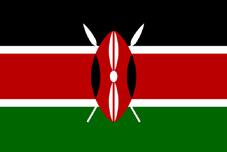
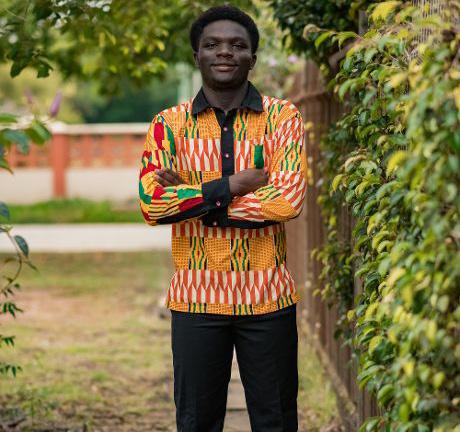
Because of you, I have lived an experience that has forever changed my future. You have not only invested in my education – you have invested in my purpose in life. And for that, I will always be grateful.
I CAME to SOS-HGIC with the intention of furthering my education and earning the prestigious IB Diploma. It had been a long time since a student from Liberia had joined the school, so when I received the opportunity, I was both excited and determined to make the most of it. I had heard a lot of good things about the school, its culture, principles and academic excellence, so I saw it as the ideal place to challenge myself and improve. Most importantly, I understood that achieving the IB Diploma from HGIC would open doors for me both academically and personally and lay a solid basis for my future.
My time at SOS-HGIC has been transformational. In terms of leadership, I have learned what it means not just to hold a position, but to truly lead with purpose and integrity.
I served as the International Head for a while before transitioning into the role of Compound Prefect, and both positions taught me how to listen, collaborate and make decisions that benefit others. These experiences helped me understand leadership as service and taught me to balance responsibility with compassion. Personally, I have grown in many ways possible. I have acquired valuable life skills, become more self-aware and developed a deeper understanding of myself and others.
Academically, the school has provided me with every possible resource, from teachers, materials, support systems and learning platforms to ensure that I reach my full potential. The school does not just focus on academic achievements, but also pushes everyone to become a wellrounded, holistic individual.
Whether it is through sports, clubs, or everyday interactions, the environment and resources around us are built to shape us into a resilient, thoughtful and capable people. |I have also been stretched beyond my comfort zone in ways that have made me more knowledgeable and confident.
The school has made me realise that challenges are part of growth. I remember sometimes when I felt like giving up, thinking the IB was too difficult. But through mentorship, peer support and the school’s nurturing environment, I learned to view those moments as opportunities for growth. HGIC has taught me to persevere, to ask for help when needed and to always keep sight of my dreams.


I love rendering help to others, and I plan to pursue a career in medicine/ nursing. I want to spend my life making people feel better, both physically and emotionally.
HGIC has played a crucial role in helping me discover and commit to my dream. The school encouraged me during times of doubt, reminding me of my purpose and giving me the strength to push forward. The support I received, academically, emotionally and socially, has been essential in keeping me focused and motivated.
Thanks to HGIC, I now feel fully prepared for university and life beyond. I have learned how to manage my time, communicate effectively and take the initiative. More importantly, I have learned the importance of resilience, empathy and self-discipline.
The values and skills I have developed here, from integrity, open-mindedness, to courage, will guide me wherever I go. I leave HGIC not only with an academic qualification but also with a strong sense of identity and purpose, ready to take on any challenge that comes my way.
HGIC more than just a place of learning –Niyat Hagos Hailu (Ethiopia), aged 18
I JOINED SOS-HGIC in July 2021 after completing secondary school in my home country, Ethiopia. I came to HGIC because I was looking for something more – a better education, broader opportunities and a new perspective.
I have dreams and life goals I always look up to and eager to achieve in the future. I have always had a dream of travelling abroad and attending an excellent school with an internationalminded community. Moreover, I also want to make my family proud and make life much better for them.
Being awarded a scholarship was a life-changing moment and a big step toward my future dreams. It gave me the opportunity to study in an international environment that challenged me academically and personally. Leaving my home country was not easy, but I knew that growth often comes from discomfort.
Over the past four years, I have worked hard to adapt – not just to the academic demands, but also to the culture, the people and the pace of life here. I had to learn how to navigate unfamiliar systems, form connections in a new community and stay
grounded in who I am while embracing change.
HGIC has become more than just a place of learning – it is where I discovered my potential, resilience and began to see the world through a much wider lens. I came here for an education, but I’m leaving with so much more: perspective, confidence and a deep appreciation for everything this experience has taught me.
My experience here has been incredibly formative on multiple levels. Academically, I had access to challenging coursework and excellent teaching that pushed me to think critically and work independently through the rigorous International Baccalaureate (IB) programme. But beyond the classroom, I gained a lot more than just knowledge.
Being in an international environment forced me to step out of my comfort zone constantly, whether that was adjusting to a new culture, communicating across language and cultural barriers, or learning how to advocate for myself in unfamiliar settings.
I also had the chance to grow as a leader. From collaborating on group
projects to taking the initiative in extracurricular activities, I learned how to listen, organise and bring people together toward a common goal.
My amazing leadership experiences included working as an international student head, working with the student body and the school management team. These experiences helped build my confidence. connection and taught me how to lead through empathy and example.
Overall, I have grown into someone who is more adaptable, independent and aware of the world around me. I am leaving this experience not only with academic achievements but also with a stronger sense of who I am and how I want to contribute moving forward in the next part of my life.
My first goal is to pursue a career in the economics, finance, or management fields where I can combine analytical thinking with real-world impact. I am particularly interested in how economic systems influence development, business decisions and people's lives on a broader scale. University will be a space for me to dive deeper into these areas, strengthen my problem-solving skills and hopefully explore entrepreneurship or policy work in the future.
HGIC has been foundational in preparing me for this next step. The academic rigour helped me develop the discipline and time/self-management skills I will need at university, especially in demanding fields like economics and finance. The IB curriculum challenged me to think critically, make connections across various concepts and approach problems with a global perspective – all essential in finance and economics.

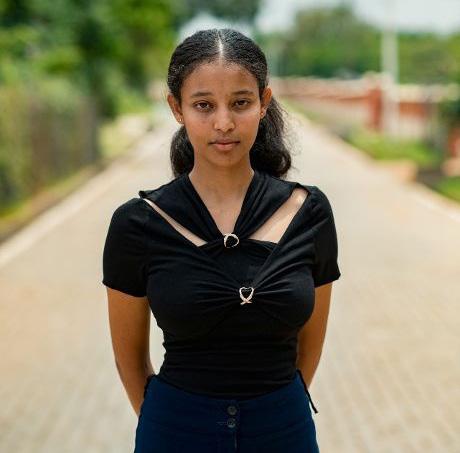
But beyond academics, HGIC taught me how to adapt. Living in a diverse community pushed me to understand people from different cultures and work effectively in teams; something that is vital in any leadership or business environment. I also had opportunities to take the initiative, whether in group projects or extracurricular activities, and that helped me grow into someone who does not just follow but also leads with clarity and empathy.
In short, HGIC did not just prepare me for university – it prepared me for the bigger world I am stepping into.
INITIALLY, the only reason any student would have wanted to come to SOS-HGIC was because of the laptops we get and that we get to travel abroad after completing school. But there is more to it. Coming to SOS-HGIC has been a lifechanging opportunity. One that I will never take for granted.
Transitioning from my Ghanaian traditional learning system to this modern, rigorous programme was not easy. Starting the Middle Year Programme (MYP) felt like entering a completely different world. I could barely use a laptop effectively like the other students, and research being one of the core skills here was something I had little experience of.
I spent most of my time using Mavis Beacon, a typing website to improve my typing skills. I am now well equipped with
the technological skills that this modern world requires.
Looking back now, HGIC has given me far more than just academics. I have grown into a resilient, independent and confident person. I have learned how to adapt, how to manage pressure and how to thrive in a diverse environment. I have built lifelong skills; critical thinking, collaboration emotional intelligence that I would not have gained in a regular school setting.
I have also learned how to lead myself before leading others. I have occupied different roles in school clubs ranging from Public Relations Officer to vice president. I have founded an initiative called Bertha's Nurturing Seedlings (BNS), which aims to provide early literacy to young children. This will help them require the necessary
skills to survive wherever they find themselves.
As I exit the gates of SOS-HGIC, I leave not just as a student, but as someone fully equipped to face the real world and well prepared to step into university. I have seen the highs and lows, and I have learned how to manage them with strength and maturity.
HGIC has given me an upper hand; emotionally, socially and academically over many students in the traditional systems, and I know that while others may still be figuring it out, I have already been trained and shaped to take on life. My plan is to pursue higher education in the healthcare field where I can give back to the community and save lives with the skills and knowledge acquired from this notable institution.
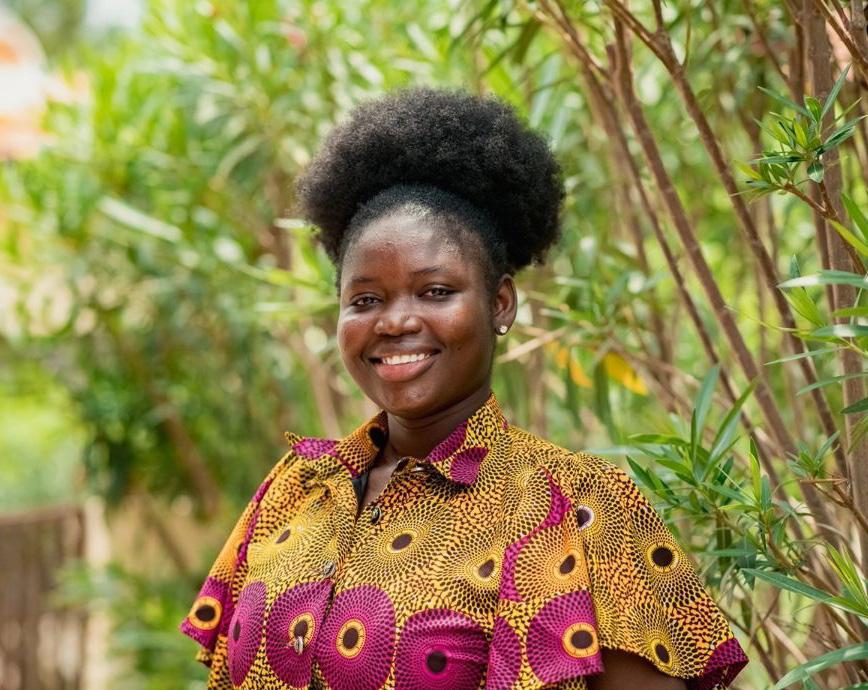

A sense of pan-African identity – Martin Boraya
EVER since primary school, I heard my siblings speak highly of SOS-HGIC – not just as a place for academic excellence, but as an environment that nurtures personal growth and development. I was inspired by the idea of being part of a diverse community where I could grow intellectually, socially and emotionally. The school’s emphasis on holistic education and networking opportunities is what truly sparked my interest in joining SOS-HGIC.
My journey has been both rigorous and rewarding. I have developed essential skills such as leadership, effective communication, research and critical thinking. I have had the opportunity to serve in leadership roles that challenged me and helped me grow.
Beyond academics, I have formed lasting connections with peers from Rwanda, Burundi, Zimbabwe, the US, the UK, Uganda and many other countries. Most importantly, HGIC has nurtured in me a strong sense of integrity and pan-African identity, values I will carry with me throughout my life. I plan to pursue a degree with the goal of making a meaningful impact in my community and across the continent.
SOS-HGIC has prepared me for this next step by teaching me how to think critically, communicate effectively and lead with purpose. The school’s multicultural environment has broadened my worldview, and its rigorous academic programme has equipped me to thrive in any university setting.
More than anything, HGIC has shaped me into a self-aware, adaptable and socially responsible individual – ready to take on the challenges of the future with confidence and determination.
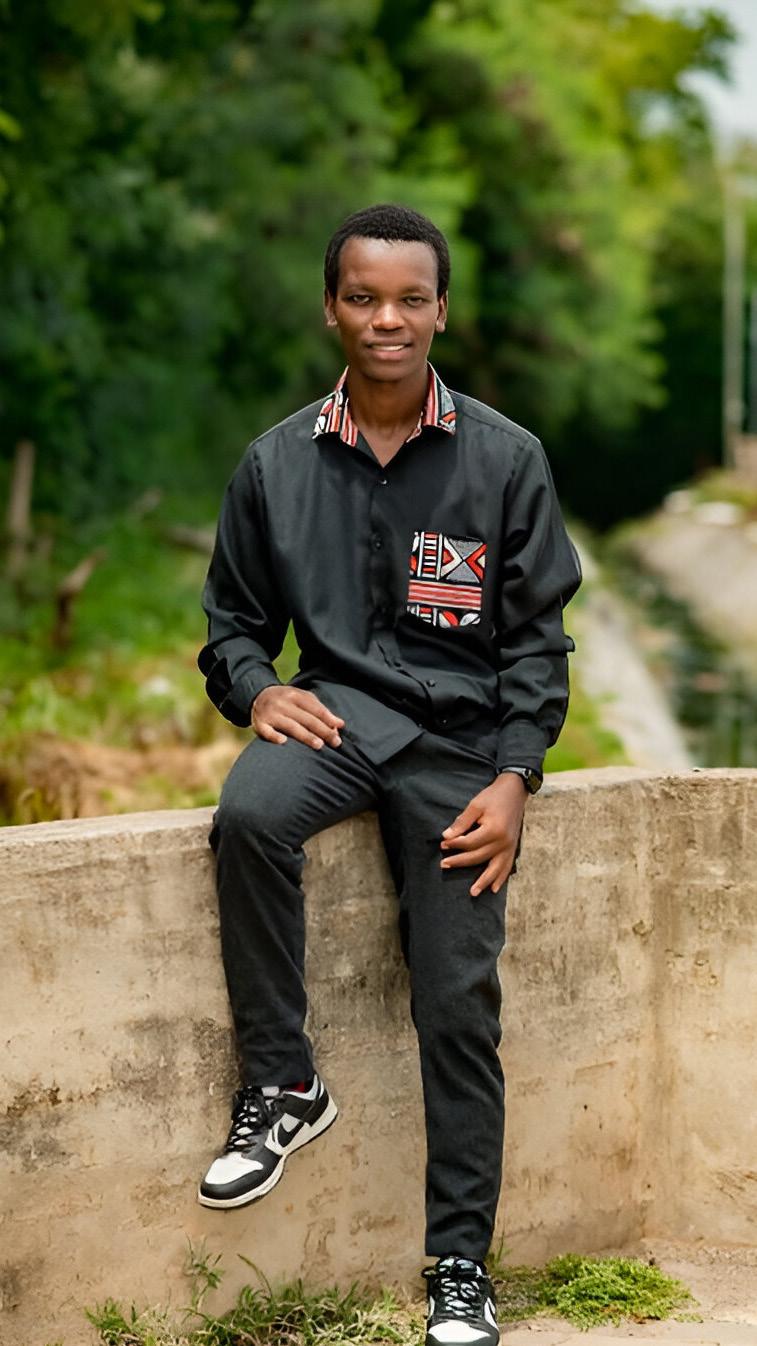

Africa’s mineral fortunes are being reimagined in the age of climate action. Jon OffeiAnsah explores how clean energy demand, ESG reform and digital transformation are turning the continent into a critical mineral powerhouse.
AFRICA’S rich geology has long been both a blessing and a burden. For generations, its vast mineral wealth—from gold to copper to rare earths—was funnelled outward with little domestic benefit. But now, the forces of geopolitics, climate policy and supply chain shifts are converging to rewrite that story.
According to the 2025 Special Mining Report by African Mining Week and Moore Global, Africa stands at the threshold of a new industrial era—one powered by critical minerals and framed by global demand for clean energy infrastructure. In an age where batteries are as valuable as barrels of oil once were, Africa is no longer just exporting ore. It is exporting opportunity.
As the world races to meet net-zero targets, the technologies that power the transition—electric vehicles, solar panels, grid-scale batteries—depend heavily on a suite of minerals concentrated in Africa. The continent holds over 30 percent of the world’s known mineral reserves and produces a majority of the global supply for several key elements.
Cobalt from the DRC, lithium from Zimbabwe, manganese from Gabon and graphite from Tanzania are no longer fringe exports—they are cornerstones of the future economy. Global players have noticed. The report highlights how companies like Glencore, Marula Mining and Black Rock Mining are signing offtake agreements with African firms to lock in long-term access.
These deals are increasingly contingent on local value addition—processing the minerals on the continent, creating skilled jobs and retaining industrial profits that have historically flowed outward. This marks a major shift from Africa’s legacy of extractive dependency to a new era of resource sovereignty.

One of the most telling developments is the growth of Africa-based gigafactories. Morocco, South Africa and Zambia are now sites for battery precursor manufacturing, lithium-ion assembly and regional supply hubs.
Morocco’s $6.3bn gigafactory project, Zambia’s copper-smelting expansion and the DRC’s cobalt refining initiatives show how the continent is positioning itself for more than just mining. These industrial ambitions are backed by supportive policy moves, international partnerships and growing interest from both Western and Asian investors.
Even the Faraday Institution projects that by 2030, Africa could be producing battery materials 40 percent more costeffectively than global averages—if the necessary infrastructure and policy conditions are in place.
But minerals alone do not create prosperity. They must move—from mine to market—efficiently, securely and sustainably. This is where Africa faces its most immediate challenge: logistics.
The Special Mining Report outlines how fragmented and ageing transport
systems raise costs and create uncertainty. Without reliable corridors, investment in production loses viability.
The Lobito Corridor is a promising outlier. Backed by the US, EU and African Development Bank, the corridor links the DRC and Zambia to Angola’s Atlantic ports, slashing export times from weeks to days. Its successful first copper shipment in 2024 is a signal that infrastructure-led industrial policy can pay off.
Other corridors—like Tanzania’s Central Corridor and Mozambique’s Beira and Nacala routes—are being modernised, but remain constrained by congestion, inefficiencies and inconsistent governance. Until these arteries are fully functional, Africa’s mineral ambitions remain shackled.
Environmental, Social and Governance (ESG) performance is now non-negotiable. Investors, particularly in Europe and North America, will not back mining projects without robust sustainability metrics.
The Special Mining Report reveals how this is transforming project financing. Private equity firms like Equitane are
pouring funds into ESG-aligned mining plays—from low-emission iron ore to solar-powered gold mines. Development finance institutions, too, are tying disbursements to ESG compliance.
South African mining companies are deploying blockchain to trace minerals and satisfy EU Battery Passport rules. Egypt’s Sukari mine and Mali’s Fekola operation are running on hybrid solar-battery systems, cutting diesel use and emissions.
In short, ESG is now the passport to capital—and the foundation of long-term profitability.
As carbon markets boom, Africa’s mines are poised to become not just mineral producers but climate asset managers.
Methane capture, ecosystem restoration and renewable energy use are creating carbon credits that can be traded internationally. According to the report, these could generate $6bn annually if managed properly.
Examples abound. The Beatrix Mine in South Africa uses methane flaring to create saleable credits. Morocco’s solarpowered Bou Azzer mine sells renewable energy certificates (RECs) to global automakers. Even biodiversity efforts— like COMILOG’s protected habitats in Gabon—are contributing to carbon offsets.
But the market is volatile and trust is fragile. Just 12 percent of Africa’s carbon credit projects meet top-tier standards. Uganda’s ECOTRUST was criticised for underpaying farmers. To secure longterm gains, Africa must ensure equity, transparency and third-party validation across the board.
No country illustrates the highstakes nature of transition better than South Africa. Long dependent on coal, the country faces social, economic and environmental headwinds as it attempts to go green.
The report shows how over 91,000 jobs in coal mining are at risk, and municipalities reliant on coal royalties face budget shortfalls. The decommissioned Komati Power Station is both a symbol of ambition and a warning—transformation without reskilling and investment creates dislocation.
Yet there is hope. The Just Energy Transition Implementation Plan envisions ZAR1.5 trillion ($83.3 billion) in investments. Projects like Seriti’s wind farms and Exxaro’s blockchain-certified
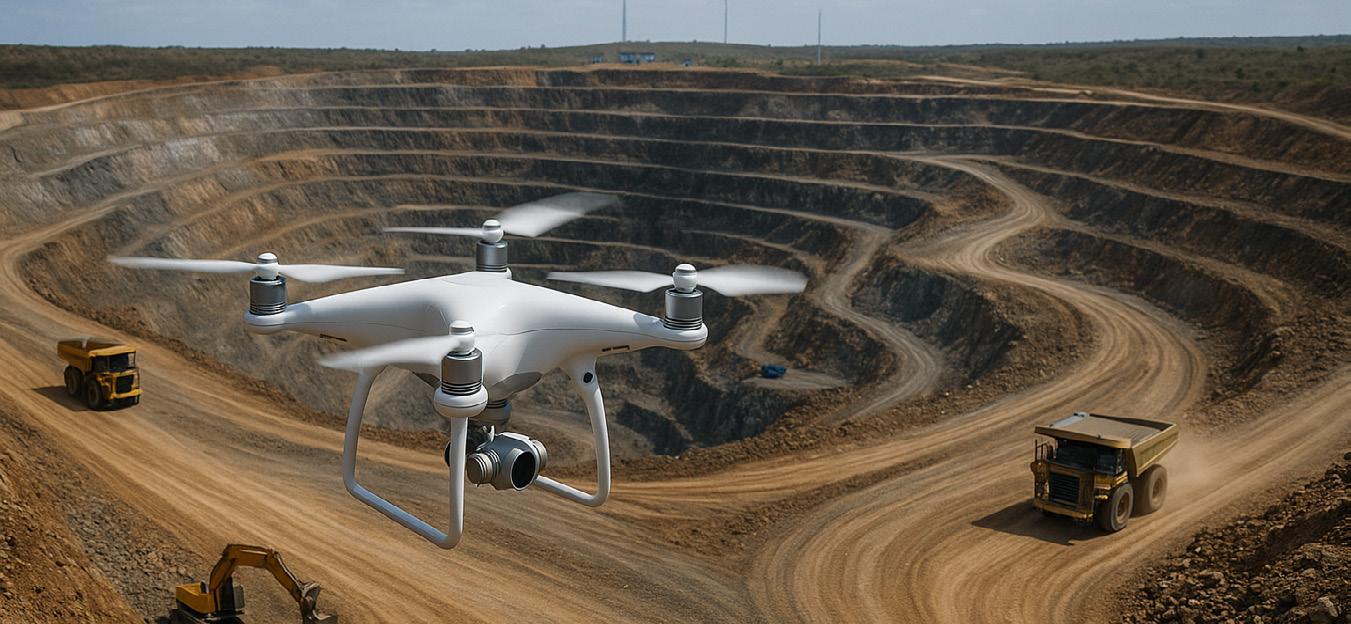
worker retraining programmes could offer replicable models. Repurposing coal infrastructure for solar and battery use is underway.
But the clock is ticking. Unless international pledges are fulfilled and policy bottlenecks resolved, the transition may falter under its own weight.
Investor appetite for African mining is strong—but it depends on regulatory clarity and consistency.
The Special Mining Report outlines how countries like Zambia, Rwanda and South Africa are digitalising licensing, improving transparency and streamlining approval processes.
Zambia’s new Integrated Mining Information System led to a 79 percent year-on-year jump in new licences. Rwanda’s Inkomane Digital platform has won praise for reducing bureaucracy. South Africa’s June 2025 digital rollout is expected to catalyse investment in platinum group metals.
But regulatory assertiveness also has a flip side. Zimbabwe’s ban on raw lithium exports, Namibia’s permit pause for rare earths and Mali’s increase in state equity stakes reflect a trend toward resource nationalism.
Still, these are not expropriations. They are recalibrations—attempts to capture more local value. For investors, the message is: adapt or miss out.
Early-stage exploration companies— once the lifeblood of African mineral discovery—are struggling. Capital is scarce, risk appetites are shrinking, and political volatility looms large.
To survive, juniors are forging joint ventures with majors. The Cobre-BHP deal in Botswana is a case in point. Others are experimenting with royalty financing, streaming agreements and even crowdfunding.
DFI-backed funds like African Lion Mining Fund III continue to support earlystage gold and base metal exploration, but their numbers are dwindling. Without fresh financing, the future pipeline of mineral production may dry up.
The junior crunch is a warning: without discovery, there can be no delivery.
Two final forces will shape African mining’s future—technology and geopolitics.
Digital transformation is accelerating. Mines are using drones, AI and real-time analytics to boost yields and cut costs. Blockchain tools trace cobalt from mine to battery. Automation is improving worker safety in remote zones.
At the same time, geopolitical realignment is tilting supply chains.
The EU’s Critical Raw Materials Act and Trump’s 2025 tariffs have created urgency around non-Chinese sources. The US-backed Lobito Corridor is as much a diplomatic move as an economic one.
Africa finds itself in a rare position of leverage. The question is: can it turn that leverage into leadership?
Africa has all the pieces: resources, relevance and a growing regulatory toolbox. The world wants its minerals—not just for industry, but for the survival of the planet.
But ambition alone won’t be enough. Governments must invest in infrastructure, skills and policy clarity. Investors must look beyond short-term returns. Communities must be part of the value chain, not casualties of it.
As the 2025 Special Mining Report makes clear, the next five years will define Africa’s role in the clean energy future. It can be a supplier—or a shaper. The difference lies in vision, execution and the courage to lead.

Ghana’s first lithium mining project is touted as a win for local development. But concerns about compensation, participation and environmental impact persist.
Jon Offei-Ansah has been reading a recent study on the issue by the Carnegie Endowment for International Peace
AS the global push for green energy intensifies, Ghana is stepping into the spotlight with a rare and highly sought-after resource: lithium. The soft, silvery metal is critical for electric vehicle batteries and clean energy technologies, and global demand is skyrocketing. In 2023, Ghana signed a 15-year lease with Barari DV Ghana Ltd, a subsidiary of Australian-based Atlantic Lithium, to develop the Ewoyaa deposit in the Central Region. The deal is historic: it is Ghana’s first lithium mining agreement, and it comes with high expectations.
For Ghana’s government, the project offers a chance to shift from raw material exporter to value-added processor. For the people of Ewoyaa, a village of 580 mainly farming residents, it represents both opportunity and risk. Will this critical mineral deliver jobs, infrastructure, and long-term growth, or will it follow the path of previous extractive projects that brought more harm than good?
The government has pitched the Ewoyaa deal as a fairer, forward-looking model. Royalties stand at 10 percent— double the historical rate for other minerals. The Minerals Income Investment Fund (MIIF) will hold an additional 6 percent stake in the project, alongside a 3.06 percent equity in the parent company listed abroad. Local listing on the Ghana Stock Exchange is also planned, aiming to open investment opportunities to Ghanaian citizens.
A key provision is that one percent of company revenue will feed into a Community Development Fund to support local education, health, and farming. There are also plans for Barari to conduct a feasibility study for a chemical processing plant within four months of the lease's activation. If this does not materialise,
the company must sell by-products like feldspar to local industries such as ceramics. The fund is intended as a direct channel to ensure the community benefits tangibly from mining activities.
This agreement, structured under Ghana’s Green Minerals Policy, seeks to break the cycle of raw mineral export. The policy mandates a minimum of 30 percent state participation in green mineral operations, prioritises domestic value addition, and aligns with the African Union’s Africa Mining Vision. With global firm Piedmont Lithium—a Tesla supplier—acquiring a 50 percent stake in the Ewoyaa project, the stakes are high.
Despite the optimism, Parliament has yet to ratify the deal. Critics question the royalty terms and the depth of community engagement. Civil society organisations like IMANI Africa and the Institute of Economic Affairs (IEA) have expressed concern that the arrangement resembles a traditional concession model tilted in favour of foreign interests. They argue for a joint venture structure with
a government-owned company leading mining operations. As the IEA noted in 2023, the deal reflects a ‘colonial-type’ contract and must be restructured for Ghana to truly benefit from its resources.
Meanwhile, questions around transfer pricing and windfall taxes remain. IMANI has warned about potential underreporting of profits through relatedparty transactions, proposing benchmarks based on international lithium market prices. The IEA has pushed for clearer value addition commitments, demanding that mining commence only after a refinery is in place. Other experts have pointed to Latin America—particularly Argentina and Bolivia—as examples of more beneficial lithium models that combine government control with private investment.
What do local residents think? Two focus group discussions conducted in Ewoyaa in 2024 revealed a mix of hope and apprehension. Most villagers are aware of the project and some expect employment. But understanding of lithium’s value, or the environmental
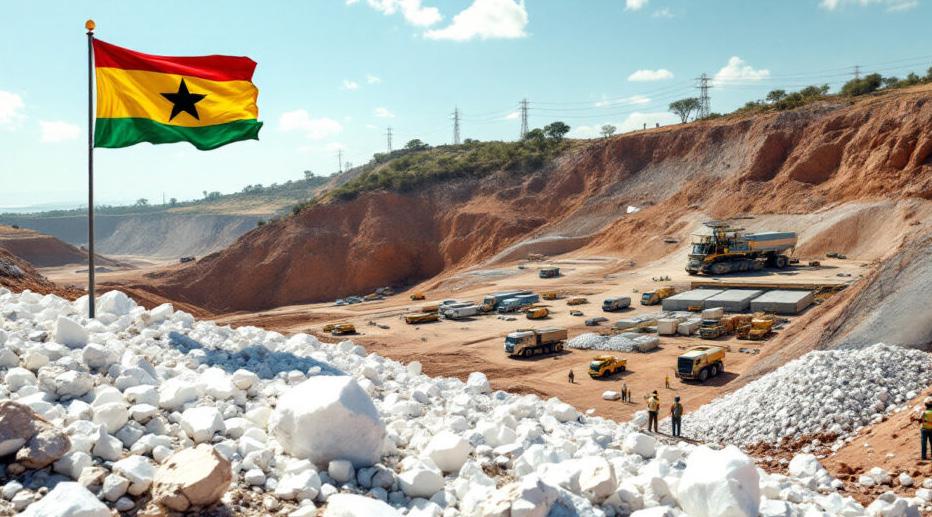

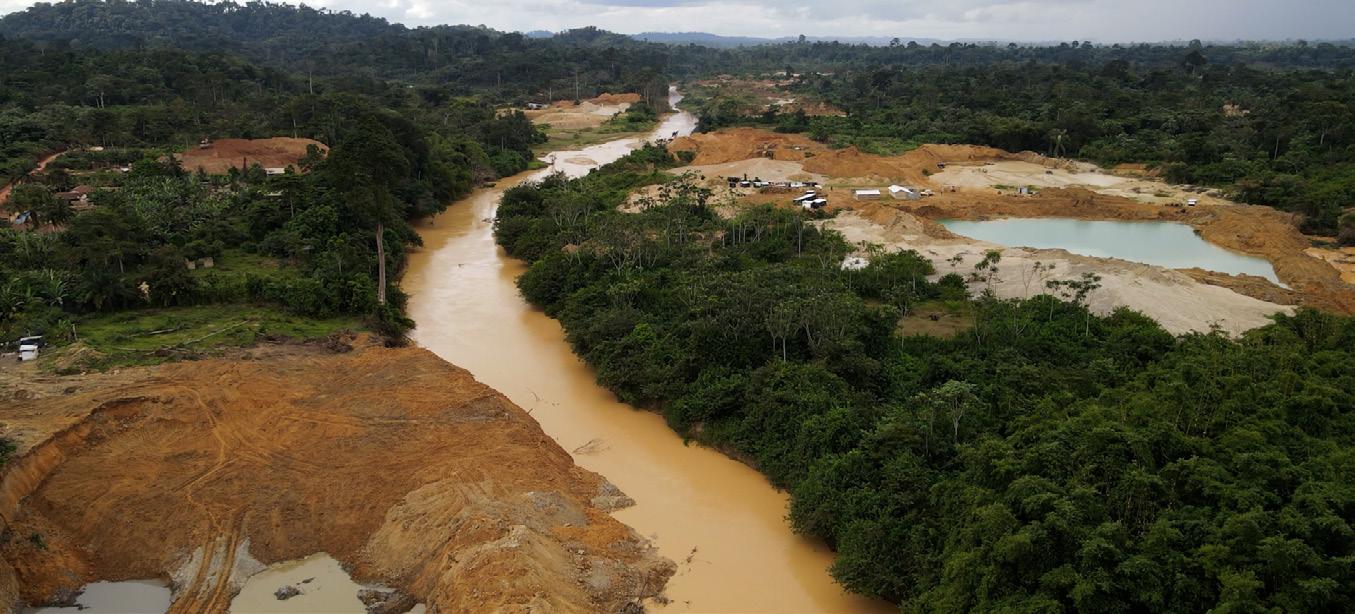
consequences of its extraction, is limited. Initial engagements by Barari reportedly bypassed community consultations, with exploratory drilling damaging crops and prompting compensation disputes. Some farmers received as little as 200 Ghanaian cedis ($19.15 at current rates) for significant losses, while others were left empty-handed.
There is strong support for employment opportunities, particularly among the youth. However, scepticism persists. Many young people lack the formal education required for skilled roles. While training programmes have been promised, few details have been shared. The gap between aspirations and qualifications remains a critical barrier. As one participant in the youth focus group said, “The company just went straight to employ some of the youth in the community without the entire community knowing what they are here to do.”
The environmental impact also looms large. Community members cited concerns about water and air pollution, drawing parallels with nearby regions affected by illegal gold mining. The Ghana Water Company has blamed illegal mining for severe turbidity in the Pra River, which has disrupted water supplies in towns like Cape Coast and Elmina. Ewoyaa residents fear a similar fate. “There will be air pollution,” said one focus group participant. “The cars that will be moving around the community will cause a lot of dust in the atmosphere. Again, it will result in water pollution.”
Resettlement adds another layer of uncertainty. While some villagers welcome new housing and infrastructure, others are anxious about losing farmland and traditional livelihoods. One elder recalled, “We made it clear to them that it will be welcoming news to us. Our main request
will be for them to employ our youth to work with the company.”
Without proper planning, resettlement could lead to long-term poverty. Previous mining-induced relocations in Ghana have shown that unless new sources of income are secured, compensation funds are quickly exhausted. A female farmer lamented, “I was given 200 GHS for the destruction of a lot of crops. I had to even give them 60 pesewas as change.” Another respondent added, “They were not paying for the damages. However, when the locals started complaining, then they started paying something.”
To ensure community gains, the Ewoyaa project must be underpinned by transparency and accountability. Traditional leaders need access to technical expertise to negotiate fair terms. Compensation must be properly structured and disbursed in a timely manner. Communities must be informed participants, not passive observers. As one respondent said bluntly, “They don’t know that the trap is property to us, which we use to catch meat for sale.”
Effective regulation is also key. Institutions such as the Minerals Commission and the Environmental Protection Agency must be well-resourced to monitor environmental standards, enforce local content requirements, and uphold best practices in community engagement. The current legal framework, while strong on paper, often suffers from weak implementation.
Investment in education and vocational training is vital. If Ghanaian youth are to benefit from this project, they must be equipped with the skills the sector demands. Partnerships with universities and technical institutions, such as the University of Mines and Technology, can
bridge this gap. Scholarship schemes, apprenticeships, and internships should be built into Barari’s corporate responsibility commitments. As a local leader explained, “The chief said it has entered into some agreement with a company to train us, so that we can be employed when the work starts.”
Atlantic Lithium and its subsidiary Barari must do more than meet regulatory minimums. They must actively invest in the social infrastructure of Ewoyaa. That includes building schools, clinics, water systems, and roads. They should also consider creating business development grants and mentorships to support local entrepreneurship. Transparent reporting of royalty payments and community fund disbursements would further enhance accountability.
A useful model may be drawn from Indonesia’s ban on raw nickel and bauxite exports, which forced companies to invest in local smelters and led to higher foreign exchange earnings. Ghana could consider similar strategies to keep more of the lithium value chain in-country. Creating partnerships between Barari and local firms, universities, or vocational schools could also help deepen local participation.
In addition, Ghana’s mining regulatory regime could require all mining companies to dedicate a percentage of their profits to reinvestment in host communities. These funds could be earmarked not just for infrastructure, but also for health and environmental monitoring, agriculture extension services, and women’s cooperatives. These measures would ensure that benefits extend beyond the life of the mine.
Ghana’s lithium project represents a rare opportunity to get mining right. If managed well, it could mark a shift towards inclusive, sustainable resource governance. But this will require a commitment to more than just economic metrics. The true measure of success will lie in whether Ewoyaa's farmers, families, and youth see tangible improvements in their daily lives.
This moment is pivotal. Ghana must decide whether it wants to set a new benchmark for green mineral extraction or repeat the mistakes of the past. With global attention focused on lithium, the stakes could not be higher. The Ewoyaa deal may well shape the future of mining across Africa. The question is whether it will be remembered as a model—or a missed opportunity.
As demand for critical minerals intensifies, Jon Offei-Ansah analyses how West African nations are reclaiming sovereignty, redrawing mining rules, and confronting foreign giants in a global resource tug-of-war
THE global mineral rush has entered a new phase—one not marked by discovery, but by defiance. From Bamako to Accra, a growing bloc of West African states is rewriting the rules of engagement in the extractive sector. Foreign firms, long accustomed to preferential treatment and pliant regimes, now find themselves facing abrupt licence cancellations, heavier tax demands, and rising political resistance.
At the heart of this movement lies a resurgent belief: that natural wealth must serve national development—not just global supply chains. With gold, lithium, bauxite, uranium and other critical minerals in high demand, West African governments are demanding a bigger cut— and in some cases, full control.
This is not merely economic policy. It is a geopolitical recalibration, reshaping the region’s relationship with foreign powers and realigning its future industrial base.
Africa is home to roughly 30 percent of the world’s critical mineral reserves, but its wealth has long served others. Much of the continent still exports raw materials while importing processed goods—a trade imbalance that limits industrial development and locks in dependency.
Nowhere is this more evident than in West Africa. In 2023, Burkina Faso and Mali saw gold contribute 87.5 percent and 94.5 percent of total exports, respectively. Ghana exported $15.6bn worth of gold, more than half of its total export value, while Guinea-Conakry exported $9.6bn in gold and an additional $7.6bn in bauxite— making it the world’s second-largest bauxite exporter after Australia.
Despite this mineral bounty, economic dividends have remained limited. Most
refining and high-value processing occurs abroad, leaving countries with little more than royalties and job creation. That is changing.
In recent years, a wave of military takeovers in Mali, Burkina Faso, and Niger has ushered in populist, anti-Western regimes. These juntas, now part of the Alliance of Sahel States (AES), are making assertive moves to reclaim control of their mineral sectors.
In Burkina Faso, Captain Ibrahim Traoré has become the figurehead of this new nationalism. Declaring that his country’s gold must no longer be “looted”, his government expropriated two mines from British firm Endeavour Mining in August 2024. Two months later, he warned that Western companies could lose
their licences. Canadian mining stocks nosedived—Iamgold dropped 15 percent, Fortuna Silver and Orezone Gold each fell 10 percent.
The message was clear: old deals are off the table.
Niger’s post-coup regime has been similarly aggressive. The country contributes nearly five percent of global uranium output and was once a major supplier to Europe. But since the 2023 coup, Niger has halted uranium exports, revoked the Imouraren mine licence held by French state-owned Orano, and shut down the Somaïr mine in December 2024.
Somaïr’s uranium stockpiles, estimated at €200 million, remain locked in limbo. Orano, once dominant in Niger’s uranium sector, is now considering a full exit—

likely opening the door to new players from Russia or China.
Mali has gone even further, rewriting its mining code in 2023 to sharply increase state stakes, tighten permit rules, and demand retroactive tax payments. In September 2024, it hit Barrick Gold with a $512 millon tax bill, prompting a legal standoff.
The government escalated matters: four Barrick employees were detained, exports were blocked, and in January 2025, 3 tonnes of gold were seized. Barrick shuttered operations at the LouloGounkoto mine—80 percent owned by the Canadian firm—only for the government to request its reopening under state control.
The case is now before the World Bank’s arbitration tribunal, but Mali may ignore any ruling, citing sovereign tax authority.
Guinea, too, is flexing its muscles. In May 2025, the junta revoked 129 mining permits on grounds of underuse, effectively clearing the slate for a new round of high-stakes negotiations. Major players in bauxite and gold mining are now walking a diplomatic tightrope, hoping to keep assets while appeasing an increasingly assertive regime.
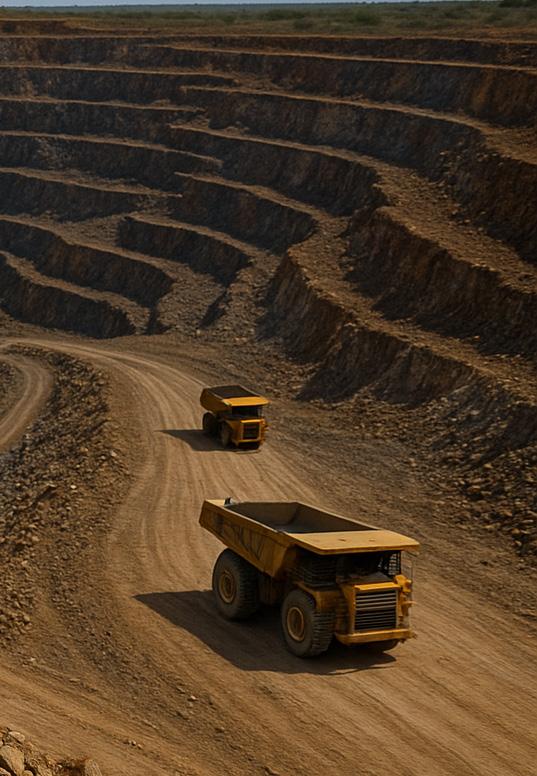
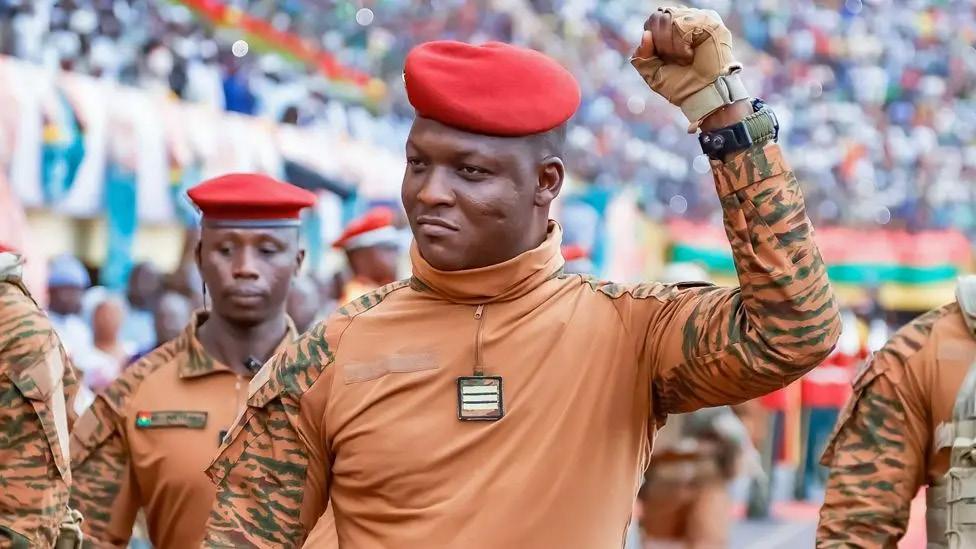
Emirates Global Aluminium, a key player in Guinea’s bauxite sector, is in talks to retain its licence after failing to build a promised refinery.
Ghana, though politically stable, is also asserting greater control—this time through regulatory overhaul rather than confrontation. A new law has banned foreign firms from the local gold trade. Instead, all gold must be sold through the newly formed Ghana Gold Board (GoldBod), which acts as sole buyer, vendor, and exporter.
Large-scale miners are still allowed to operate, but must sell 20 percent of their output to GoldBod at a slight discount. It’s a move designed to give the state a stronger grip on pricing and reserves without alienating investors.
Western firms are not the only ones under pressure. Despite their political alignment with Sahelian juntas, Chinese and Russian companies are also being scrutinised. In Mali and Niger, Chinese firms have faced fines and threats of expulsion for alleged environmental violations and labour abuses.
Still, both Beijing and Moscow continue to expand their presence. Russia’s Norgold has secured a gold project in Burkina Faso. Rosatom is reportedly eyeing uranium opportunities in Niger. Meanwhile, China is advancing lithium projects in Mali and iron ore extraction at Guinea’s Simandou mine.
The competition is fierce, but the rules have changed.
Across West Africa, the message to international firms is blunt: mineral wealth is no longer up for grabs. Companies must align with national development plans, honour local regulations, and accept reduced profit margins—or risk losing access altogether.
Some have adapted. Nine major gold miners in Ghana, including Chinese, Swiss, and Australian entities, recently agreed to GoldBod’s terms. Others are fighting court battles, scaling back operations, or exiting the region entirely.
Yet the overall direction is unmistakable: sovereignty now trumps convenience. The days of resource concessions as routine paperwork are over.
This moment is not just a legal shift— it’s a historic realignment. For decades, West Africa’s mineral policies were shaped by colonial legacies, donor expectations, and foreign investor pressures. That model is crumbling.
Instead, a more defiant and developmental approach is taking hold. Governments—especially military ones— are reframing mineral extraction as a matter of national pride, sovereignty, and security. And as global demand for critical minerals accelerates, their bargaining power is rising.
Whether this leads to genuine industrial transformation or new forms of elite enrichment remains to be seen. But one thing is clear: West Africa is no longer content to dig and deliver. It wants to refine, retain, and rule.

The security situation in the beleaguered country is deteriorating in the midst of a worsening economic crisis, as ordinary citizens in the embattled regions struggle to survive, according to Concerned Citizens’
THE current political, economic and security situation in the Republic of South Sudan is indeed worrying for South Sudanese all over the world. In 2023, the Concerned Citizens’ Network for Peace (CCPN) developed four scenarios for the country that gained independence in 2011.
While three possible options for peace and stability in the country have not materialised, it is the fourth option –resumption of war – that looms large for South Sudan. It is disheartening to witness how the country has gradually drifted towards the fourth scenario.
This has exposed the civilian population to dire living conditions that are similar to what people experienced during the liberation days. Today, South Sudanese in different parts of the country remain terrified and continue to endure aerial bombardment, caught in crossfire and under siege.
The fear is an outbreak of full-fledged war in 2025. From the perspective of citizens, the few powerful people running the affairs of the country are divided based on ethnic, regional and, in some instances, personal economic interest. Meanwhile, the vast majority of South Sudanese are languishing in a deplorable situation.
More hatred is growing among the population fuelled by negative ethnic and political sentiments. This is a matter that is not just worrying every citizen but also the region and friends of South Sudan.
The situation has further been exacerbated by the heavy deployment of armed forces in the country. From the perspective of citizens, the government is using every force within its reach to keep the situation under control and even calling for international support from the Uganda Peoples Defence Forces (UPDF).
Recalling the role of Uganda in the liberation of South Sudan, and as one of the guarantors to the agreement, South Sudanese would always perceive Uganda as a reliable neighbour. Any contrary involvement risks jeopardising the history of support during the liberation struggle.
Thus, Uganda’s involvement in the current turmoil in South Sudan has raised questions about whose interest Kampala is pursuing and how sustainable is the intervention. Having followed the recent developments in the country, especially the armed confrontation and aerial bombardment witnessed in many South Sudanese regions, civilians are in a state of confusion.
They are left with only one option: to ask their leaders to explain what is happening and to heed their appeal for peace and stability after 14 years of independence without elections. In this case, the South Sudanese people believe that any neighbouring country or external
force can only rationally accept to deploy boots on the ground solely in the interest of peace – more especially as a guarantor of the peace agreement: the Revitalised Agreement on the Resolution of the Conflict in the Republic of South Sudan (R-ARCSS) 2018, which is still perceived to be under implementation.
While appreciating that the guarantors of the R-ARCSS and the international community are eager to support the people of South Sudan on the path to realisation of peace and stability, the CCNP is alarmed by the presence of the UPDF in the country. In the view of ordinary citizens, the presence of the UPDF has exacerbated their suffering; caused deaths of civilians; caused starvation; unleashed horror; and caused trauma and displacement.
Therefore, as a guarantor of the peace agreement (R-ARCSS) and as a good neighbour, we the Concern Citizens’ Network for Peace are asking the people and government of Uganda to join efforts



with the Intergovernmental Authority on Development (IGAD), the African Union and other international partners to ensure that Uganda’s role does not fuel the situation, but rather de-escalate it by encouraging dialogue, negotiation and peaceful means to resolve conflicts in South Sudan for the mutual benefit of the two countries.
However, if no swift action is taken, the situation will fast degenerate into more atrocities, war crimes and crimes against humanity. For the sake of good neighbourliness, we urge the Ugandan government to reconsider the decision to deploy troops using heavy artillery and war planes undertaking aerial bombardment in South Sudan.
We call on the Parliament and government of Uganda to expeditiously facilitate the withdrawal of the UPDF from taking part in the ongoing military offensive in South Sudan.
Currently, many political actors seem to have chosen silence as a strategy and the general outlook of the country depicts advancement towards a full-fledged military confrontation. The civic actors
We urge peace actors to strategically support existing locally initiated peace efforts, dialogue and mediation processes led by non-political stakeholders targeting
involvement has raised questions about whose interests it is pursuing
(non-political stakeholders), the UN Mission in South Sudan (UNMISS) and other development partners in the country cannot continue to watch South Sudan drift into anarchy while the parties to the R-ARCSS are not exhibiting trust and political will to implement the agreement and work together for the sake of the country.
both national and sub-national actors. This will be designed with full knowledge of previous experiences, current realities, sensitivity and use of local knowledge, networks and existing peacekeeping and peacebuilding structures in the country.
The CCNP is a platform that brings together South Sudanese citizens from diverse levels of society. The network was established in 2012 to provide space for intellectual and analytical discourse to contribute to peace, development and stability. It has been engaged in creating scenarios designed to forecast trends in national governance, security, economy, domestic/foreign policy, planning and forward thinking for the country.
Colonialism did more than redraw the borders in Africa; it disrupted languages, dismantled cultures and devalued traditions, to the extent that current internal conflicts and systemic failures across African nations are not isolated events but symptoms of unresolved historical pain, argues Kaltumi Abdulazeez
AFRICA’S history is marred by centuries of slavery and imperialism that robbed the continent of its identity, dignity, indigenous beliefs and ancestral lands. These weren’t just acts of historical injustice; they were assaults on the soul of a continent.
The trauma of colonisation didn’t end with the lowering of foreign flags. It persists today, etched in the mindsets of leaders, the division of communities and the weakened structures of governance.
Colonialism did more than redraw borders; it disrupted languages, dismantled cultures and devalued traditions. What we now witnessing as internal conflicts and systemic failures across African nations are not isolated events; they are symptoms of unresolved historical pain.
Although many African countries gained political independence in the mid-20th century, true liberation remained elusive. Rather than forging indigenous governance systems rooted in African values, nations inherited the Westphalian, capitalist framework imposed by their former colonisers. This system, foreign in design and spirit, fuelled continued exploitation.
With colonial powers gone, new internal divisions emerged, stoked by foreign interests who exploited ethnic and religious fault lines. Instead of unity and development, post-independence Africa became a continent trapped in cycles of violence, migration crises and identity
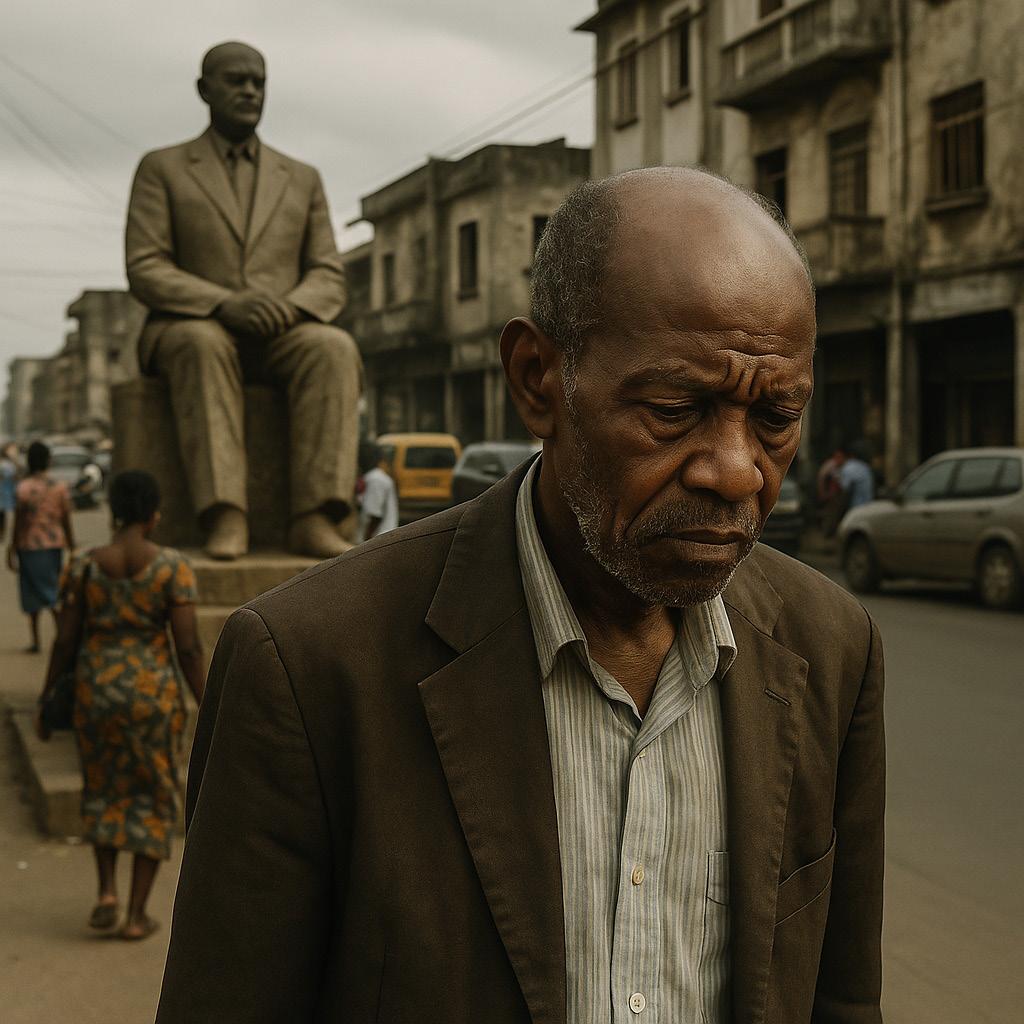
Modern Africa faces a profound identity and leadership crisis, much of it self-inflicted yet rooted in colonial disruption
confusion, while its wealth continued to be siphoned away.
Modern Africa faces a profound identity and leadership crisis, much of
it self-inflicted yet rooted in colonial disruption. The signs are everywhere: Tribal and religious divisions: Communities are fractured, with groups

pitted against one another in a quest for power and dominance.
Internalised racism and sexism: Many African women are socialised to view their skin as inferior. Cultural self-hatred is normalised, and patriarchal systems keep women out of decision-making spaces.
Economic paradox: Despite abundant resources, Africa relies heavily on imports. The promise of democracy has devolved into plutocracy where governance serves the rich and powerful, not the people.
Institutional collapse: Corruption is endemic. Justice serves the elite, while the youth age prematurely under the weight of poverty. Children grow up in instability, and infrastructure disintegrates. Investors flee, maternal deaths rise, and crime festers in the wake of mass unemployment.
Peace cannot flourish in a society where:
• The oppressed starve while corrupt leaders live in opulence.
• Women are marginalised and denied agency.
• Religion is weaponised to incite violence.
• A hungry man is lynched for stealing bread, while politicians embezzling billions are revered.
From the war-torn streets of Sudan to the resource-ravaged villages of the Democratic Republic of Congo, the truth is clear: Africans are killing Africans,
– "I am because we are" – must guide our future.
Reject puppet leadership: Say no to externally imposed figures. Leaders must serve their people, not foreign interests.
Prioritise knowledge: Invest in research, education and homegrown innovation to drive sustainable development.
Empower women: Tap into the immense potential of women as leaders, entrepreneurs and agents of peace.
Strengthen Economic Unity: Create a continental currency, remove trade barriers, and enhance intra-African mobility.
Healing begins with forgiveness not as an act of forgetting, but as a deliberate break from the cycles of trauma. To forgive is to reclaim agency, to confront history and to rebuild on our own terms. Africa’s salvation lies not in foreign aid or imported systems, but in unity, introspection and a return to shared values.
We were once one people before artificial borders split us apart. It’s time to remember that truth, and to rise not as victims of our past, but as architects of our future.
Africa’s transformation starts with
often at the behest of foreign interests. The question is no longer how we got here, but what we must do to confront this reality.
At the heart of Africa’s challenges is a crisis of leadership. The continent longs for leaders who are not just intelligent, but empathetic, ethical and visionary. And while such leaders are scarce, hope lies in a rising generation, one that is unafraid to challenge colonial legacies and demand change.
To heal and rebuild, Africa must: Reconnect with its roots: Revive indigenous peacebuilding and governance practices. African philosophies like Ubuntu
you. Whether you are a policymaker, community leader, youth advocate, educator, or everyday citizen, now is the time to act.
• Challenge systems that divide.
• Mentor the next generation.
• Speak truth to power.
• Embrace and preserve your culture.
• Build bridges, not borders. Let us rise together and break the chains of intergenerational trauma. Let us forgive, heal and build the Africa we deserve.
Kaltumi Abdulazeez is a peacebuilder, humanitarian, and gender advocate. She is the founder of the Ladies Empowerment Goals and Support Initiative (LEGASI), working to champion peace, equality, and sustainable development across Nigeria. Learn more at www.legasi.org.
Although the continent’s status as a net food importer has stabilised over the last decade in absolute terms and has not worsened despite rapid population growth and rising per capita incomes during much of this time, David Luke finds out why 280 million Africans, a fifth of the continent’s population, live with malnutrition and 340 million Africans, a quarter of the population, face hunger, and why food deprivation on this scale persists in Africa
IN 2021, Africa recorded an annual net trade deficit of $34 billion in the food and agricultural sector but below the peak of $47 billion reached in 2011 (in nominal prices, which suggests underappreciation of how much more significant the deficit was in 2011). If we read gains in productivity and output into these figures as fairly good news for the continent, the sobering reality is that food insecurity remains widespread in 42 of the 54 African countries, as the headline numbers on food deprivation attest.
We traced the root of Africa’s food security challenges to an economic structure that is based on mainly unprocessed, primary products being exported in return for imports of final consumption goods. Lack of economic diversification from primary commodities has been described as ‘the heart of the matter’ for African development.
The implication is that Africa’s commodity trade supports value addition, economic growth and jobs elsewhere in the world while reinforcing high rates of poverty at home. Since poverty, unemployment and food insecurity are interrelated, it is an economic model that is inherently vulnerable to food security risks, which is intensified when terms of trade shift or shocks emerge, as the recent Covid-19 pandemic and post-Covid-19 food price inflation attest. The Economic Commission for Africa of the United Nations estimates that 50 million more Africans were in poverty in 2023 than in 2019, an increase of 28 per cent.
Africa’s population grew by an estimated 10 per cent over the same period, so this is largely driven by a rise in the poverty rate (not only population growth).
Overall, 476 million Africans – about a third of the population – were in poverty in 2023.
As poverty rates have declined elsewhere in the world, 60 per cent of the world’s extreme poor now live in Africa. Food deprivation is inherently a symptom of poverty.
An assessment of the economic growth requirements for achieving the sustainable development goal of halving poverty by 2030 in African countries concludes that, on average, African countries will not only
We recognised climate change as a factor that is making an already-trying agriculture and food security situation even more difficult. Agricultural emissions are also part of the problem. This requires greater scrutiny of the sustainability of production systems.
We outlined an approach for thinking about the interaction between trade, food security and climate risks and identified the varying effects of climate change particularly on the production of the eight food products most widely consumed in
Africa’s commodity trade supports value addition, economic growth and jobs elsewhere in the world while reinforcing high rates of poverty at home ‘ ’
need to grow by six per cent or more every year up to 2030 but also need to ensure that the benefits of growth are widely shared through social protection policy measures that take prevailing inequalities into account.
Africa, which we referred to as Africa’s basic foods.
The eight basic products of yam, cassava, maize, rice, wheat, meat, poultry and fish contribute significantly to daily calorific intake across the continent. We
established that yields in almost all of these products generally trailed global productivity and output, despite nominal growth in production. Yams are the main exception and cassava a partial exception.
Agricultural policies are important determinants of food security outcomes. Finance, investment, foreign aid, institutions, actors and capacities interact with policies in playing a key role in resource allocation along the food value chain, from production to consumption, from supply to demand. We unpacked the chokepoints in policy implementation, resources, capacities, climate and sustainability risks that hold Africa back from becoming an agricultural powerhouse despite having 60 per cent of the world’s arable land area.
We probed the observable patterns of food trade within the continent or at the intra-African level and with foreign partners. A major consequence of underperformance in Africa’s food production is that intra-African trade in food products remains relatively small, although this trade has grown in value in real terms over the last 10 years. This is in line with our finding that the continent’s status as a net food importer has stabilised and not worsened. Facilitating greater intra-African trade could boost the continent’s food production if it allows African producers to gain a greater share in the African market. Small-scale informal cross-border trade is ubiquitous and reflects the dominance of the smallholder farming model. By creating a detailed partial equilibrium model to simulate the expected impact of the African Continental Free Trade Area (AfCFTA), a major initiative to liberalise trade across the continent, we found that the impact of the AfCFTA on intra-African trade will be relatively modest. That is because much of that trade is already liberalised through preexisting regional trade agreements, such as those of the EAC, COMESA, SADC and ECOWAS. It is through these regional arrangements that most of Africa’s current intra-African trade in the agriculture sector flows.
This finding on the limited gains to be expected from the AfCFTA prompted us to examine the provisions of the AfCFTA Agreement and Protocols on non-tariff barriers. We found that the AfCFTA legal instruments embody best practices for harmonisation of food safety standards, technical regulations and regulatory compliance. If these provisions, along with

other regulatory measures on services, investment, digital trade, competition policy and intellectual property rights, are implemented effectively, they could boost intra-African value chains in agriculture and agribusinesses, enhance efficiency and lower prices.
Concerning trade with foreign partners, we deconstructed the food trade deficit to reveal that the geography of these trade relationships is changing, with increasing food trade flows between African and emerging partners in the Global South. The changing geography is also reflected in

trade in agricultural inputs as the European Union and US lose trade shares to China and India.
Finally, we turned our attention to the World Trade Organisation (WTO), the world’s trade regulator, where 42 African countries are part of the net foodimporting developing countries group that coordinates efforts to keep international food markets open, monitors food aid flows and constitutes an important stakeholder group in negotiations to reform global rules on agricultural trade. We examined the contradictory role that food security

plays in international trade. Agricultural subsidies in countries that can afford them incentivise food production not only for domestic consumption but also for trading in open markets and for food aid donations. While overproduction contributes to global food availability, it disincentivises production in poorer and net foodimporting countries. The trade-offs in multilateral agricultural reforms need to be better understood by African negotiators as some reforms might be desirable from an African agricultural production perspective but not necessarily from a consumption perspective.
Our overall conclusion on why so many Africans endure food deprivation is that the story of Africa’s food trade, food security and climate risks is complex, and resists being reduced to a simple, comprehensive narrative. But the keys that will unlock a sustainable pathway to food
unemployment and food deprivation on the continent; (3) attention to policy implementation, finance, investment, institutions, knowledge, capacities and behind-the-border trade measures that are required for boosting agricultural productivity and output and bringing trade costs down; and (4) adaptation and mitigation strategies in response to climate risks that are responsive to fast-changing knowledge and technologies. These are what matters most to bring down the high numbers of malnutrition and hunger among Africans.
This book has unpacked the critical issues that underlie food security in Africa. We have provided insights for interrogating policy choices and fiscal provisioning and for activism and campaigning at various levels of government, economy and society that interface food security. The book is published on an open access basis to make it easily accessible and to enrich discussion and engagement on the issues. Researchers are encouraged to go deeper into the ideas covered in this book. For teachers and educators, the book can be used in interdisciplinary courses on international development and across several disciplines in the social sciences including economics, law, politics and international relations.
security on the continent are (1) economic growth and rising incomes that are widely shared; (2) more value added in regional and global value chains to transform the economic model that underpins poverty,
Most importantly, it is hoped that this book will help to generate a fuller understanding on what needs to be done to overcome food insecurity in Africa.
David Luke is Professor in Practice and Strategic Director at the London School of Economics Firoz Lalji Institute for Africa. The research team that came together under its Africa Trade Policy sought to understand and explain why Africa struggles with food availability and stability, which are the essential pillars of food security. Luke, David (2025) ‘Conclusion: trade, food security and climate risks’, in: Luke, David (ed) How Africa Eats: Trade, Food Security and Climate Risks, London: LSE Press, pp. 243–255. https://doi.org/10.31389/lsepress.hae.j
License: CC-BY-NC 4.0

For in-depth analysis on developments in a fast-changing continent
Testimonials from some of our online subscribers:
We wish to compliment the Africa Briefing Magazine for its insight and value added stories from the Last Frontier. From a Scandanavian view the quality of material presented on time gives us the edge for investment and business purposes. Keep up the good work. Jon Marius Hoensi MD Marex Group, Norway.
I write in conjunction with JIC Holdings and its CEO, Mark Anthony Johnson, to commend Africa Briefing on its coverage of the important political, economic and social news and events in Africa. Its coverage of a wide range of topics is very impressive. I look forward to future editions. David W Gouldman, Consultant, JIC Holdings, United Kingdom.
News, analysis and forecast
Africa Briefing is an interesting new project. The publication helps fill the gap in business and economyfocused African journalism. Africa Briefing combines a good news sense with crisp copy to the reader rapid immersion into what is important in economies across the continent. James Schneider, Editorial Director, New African Magazine, London, UK
2 Redruth Close, London N22 8RN, United Kingdom
Phone: +44 (0) 208 888 6693
From the Dangote refinery scale-up to the Lobito railway, WAGP gas link and EAC’s digital customs, new corridors are cutting costs, speeding clearance and shifting market power across the region, writes Dorothy George
AS supply chains grow more vulnerable and the world tilts toward protectionism, a quiet transformation is unfolding across Africa. Trade corridors once fragmented by outdated logistics and customs red tape are being rewired for speed, scale, and sustainability. From the Lobito Atlantic Railway to the revamped West African Gas Pipeline and digitised customs systems, regional partners are reshaping how—and where—goods flow.
This analysis is based on the 2025 Regional Integration and Market Access Insights Report, published late July by the African Export-Import Bank (Afreximbank), which offers a comprehensive review of how transport corridors, trade reforms and market access initiatives are driving structural transformation across the continent.
Investment shortfalls remain acute. The African Development Bank (AfDB) estimates the region needs up to $170 billion annually for infrastructure, with a persistent financing gap of nearly $96 billion. Without it, the cost of doing business soars—road transport alone adds almost 30 percent to the final cost of goods.
Yet there are signs of momentum. Nigeria’s Dangote Oil Refinery, now operating at 85 percent of its 650,000 bpd capacity, has slashed fuel imports by 50 percent in one year and is exporting refined products to neighbouring markets. With stable fuel supplies and falling pump prices, the facility is reducing Nigeria’s current account deficit while improving energy security across West Africa.
Farther south, the Lobito Corridor—a rail and port route linking Angola to the DRC—is slashing copper and cobalt transit times from weeks to just six days. The corridor is also attracting freight away from overburdened eastern ports, enabling the creation of new processing zones and logistics hubs.
These projects mark a shift in how infrastructure is viewed: not just as
a development tool, but as a lever of economic sovereignty and geopolitical resilience. Cross-border transport and energy infrastructure—like the West African Gas Pipeline (WAGP)—are now seen as public goods. The WAGP, in particular, has saved Ghana more than $1 billion in power fuel costs and allowed a switch from diesel to cleaner natural gas, improving industrial reliability in Benin and Togo as well.
Alongside hardware upgrades, digital trade systems are quietly transforming the regional landscape. The East African Community’s upgraded Single Customs Territory (SCT) system, rolled out in January 2025, is a standout example. It connects ports and customs authorities in real-time, enabling instant data exchange and automating clearance.
The results are staggering. Declaration costs have fallen 90 percent—from $360 to just $36. Documentation times have plummeted from 10 days to 1. Truck
turnaround along trade corridors has dropped from 18 days to under 6—saving traders over $63 million each year.
CEMAC has followed suit, aligning its tariff regime with global standards. Its newly operationalised Common External Tariff (CET) introduces a simplified four-band structure—ranging from 0 percent on essentials to 20 percent on finished goods. The aim: cut red tape, spur industrialisation, and reduce trade distortions across Cameroon, Chad, the Central African Republic, Congo, Equatorial Guinea, and Gabon.
The July 2024 entry into force of the COMESA–EAC–SADC Tripartite Free Trade Area (TFTA) marks a major step forward. Covering 26 states and over 60 percent of regional GDP, the TFTA lays the groundwork for tariff harmonisation and the expansion of regional value chains. Its three pillars—market integration, industrial development, and infrastructure connectivity—mirror the broader AfCFTA ambitions.
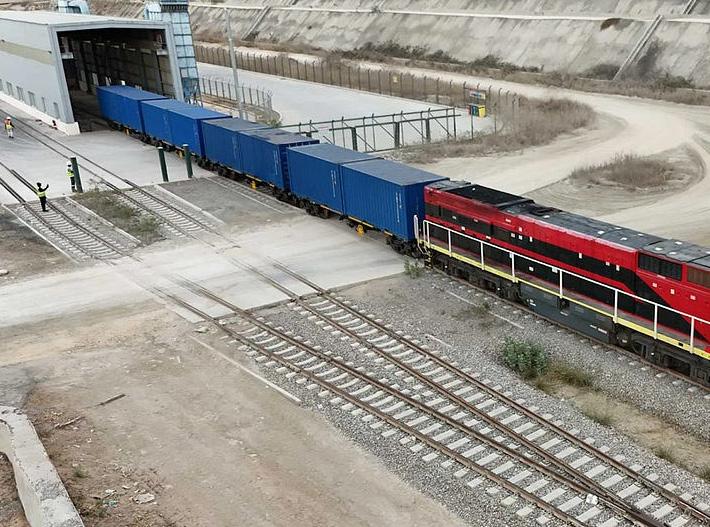
The private sector is responding. In Nigeria, the government is working with Morocco’s E-move Vehicles to establish EV production hubs. At the same time, Nigeria’s Ministry of Industry, with backing from UNDP and Uganda Airlines, launched the Nigeria–East–Southern Africa Air Cargo Corridor. By offering discounted rates and trade intelligence, the corridor could cut export logistics costs by up to 75 percent, with women-led MSMEs included in the pilot phase.
Meanwhile, Tunisia is digitising and greening its textile exports under the ITCbacked GTEX/MENATEX programme. This includes circular economy practices and SME support to expand exports to the Middle East and the continent.
One of the most powerful enablers of this shift is digital transparency. A mobile NTB (non-tariff barrier) reporting app launched by the AfCFTA Secretariat and UNCTAD in 2024 allows traders to report and track complaints in real time, integrated with the Trade Barriers Africa platform. The system reduces delays and dispute costs, especially for smaller businesses.
This is complemented by the African Trade Observatory (ATO), which provides data and trade intelligence to both governments and private sector actors. ATO analytics are helping shape evidencebased trade policy while aiding exporters in identifying regulatory bottlenecks and market opportunities.

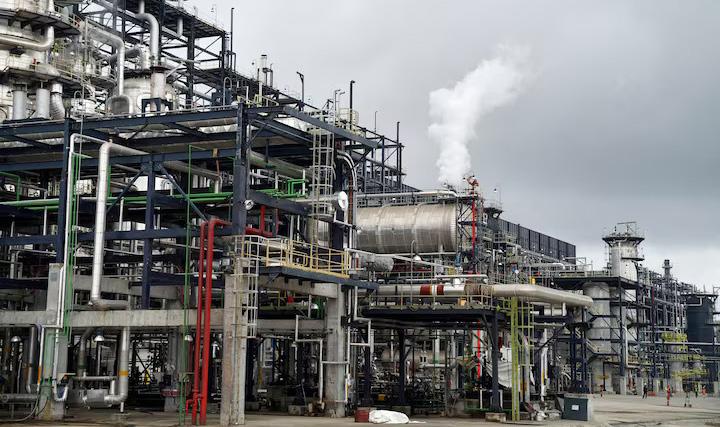
At a broader level, the EU-backed Trade Competitiveness and Market Access Programme (TCMAP) is working with Afreximbank, UNIDO and others to enhance access to finance and improve quality compliance. Afreximbank’s digital platforms, such as the Africa Trade Gateway, function as one-stop shops for due diligence, finance, and market entry.
However, integration is not without its tensions. In March 2025, Malawi restricted agricultural imports from Tanzania, prompting swift retaliation—including bans on Malawian goods in transit. Spoilage of perishables and financial losses mounted until a bilateral agreement was reached to develop a Simplified Trade Regime Agreement by May.
In North Africa, Morocco blocked selected Egyptian imports citing noncompliance with rules of origin under the Agadir Agreement. Egypt responded with softer measures, easing clearance for Moroccan goods and committing to faster registration.
These flashpoints underline the importance of dispute mechanisms under the AfCFTA framework and the risks posed by uneven implementation of regional trade rules.
The regional push comes as the global trade order fractures. In December 2024, China granted zero-tariff access to 43 Least Developed Countries, including 33 from the continent, across all product categories. For countries like Zambia, Ethiopia and Chad, this opens new export opportunities in agriculture and textiles.
Conversely, the United States moved toward protectionism in 2025, imposing a blanket 10 percent tariff on all imports
(excluding Canada and Mexico), escalating duties on 57 countries, and targeting China with tariffs up to 145 percent. The elimination of the $800 de minimis threshold hit low-value exporters hard.
The knock-on effects were immediate. Despite preferential access under AGOA, regional countries posted a combined $3.5 billion trade deficit in 2024. Exports remain concentrated in just five nations—South Africa, Nigeria, Kenya, Lesotho and Ethiopia—and focused in textiles and raw materials.
In response, South Africa and the EU launched negotiations in March 2025 for a Clean Trade and Investment Partnership (CTIP), backed by €4.7 billion. The deal prioritises collaboration on clean energy, critical minerals and green tech, anchoring supply chain resilience through more sustainable trade.
According to the Afreximbank report, the consolidation of these gains will require more than just tariff cuts. Trade digitalisation, logistics upgrades, and strong dispute systems must become the new baseline. Tools like PAPSS, the NTB app, and regional trade observatories will be central to reducing costs and enhancing compliance.
As global trade norms continue to evolve—driven by climate rules in Europe, tariffs in the US, and competition with China—regional integration offers a buffer and a springboard. The emergence of smarter, cleaner, and better-connected trade corridors is more than just a logistics win— it is a strategic reorientation that could determine the future of industrialisation and inclusive growth across the Global South.
Cairo’s yuan pact with Beijing signals a seismic shift in Africa’s currency politics — and China’s quiet campaign to dislodge the dollar is picking up speed, writes
Brendan Odoi
THE Chinese yuan is making decisive inroads into Africa’s financial architecture. Early July, Egypt became the latest country to deepen currency ties with Beijing, after the People's Bank of China and the Central Bank of Egypt inked a raft of deals aimed at integrating the renminbi into bilateral trade, finance and investment flows.
Signed during Chinese Premier Li Qiang’s visit to Cairo, the agreements mark a turning point in China-Egypt economic relations. The new framework covers everything from expanding China’s UnionPay system in Egypt to cross-border yuan transactions facilitated through the China-Egypt TEDA Suez Economic and Trade Cooperation Zone.
These operations are set to run through CIPS, the Cross-border Interbank Payment System, which Beijing is aggressively promoting as an alternative to the SWIFT network. People’s Bank of China governor Pan Gongsheng described the move as ‘a key step in advancing economic ties’ — but its significance stretches far beyond Egypt’s borders.
The country’s embrace of the yuan now puts it alongside other African powerhouses — South Africa, Nigeria and Angola — in a growing bloc of nations shifting away from the US dollar in favour of a Chinese-backed financial ecosystem. It is a development that signals Beijing’s accelerating effort to internationalise its currency, and to root that ambition firmly in African soil.
Egypt’s new pivot toward the yuan is not an isolated gesture. Rather, it forms part of a broader continental trend in which African countries are warming to China’s overtures on currency diplomacy.
South Africa has played a vanguard role since at least 2015, when its central bank signed a 30 billion yuan swap deal with Beijing to ease short-term liquidity
pressures and facilitate trade. In early 2025, Nigeria renewed its own 15 billion yuan bilateral currency swap agreement — three years after the previous pact had lapsed — citing the need to smoothen trade flows and reduce exchange rate shocks.
Meanwhile, Angola — one of China’s largest oil suppliers — is gradually shifting to yuan-denominated transactions in both energy and infrastructure deals. The adoption of CIPS by Angolan banks is just one indication of how deeply China’s financial tools are now embedded in key sectors across the continent.
‘Africa is a continent where trade with China is important, but it is also one where many countries struggle to access sufficient foreign currencies such as the euro or US dollar,’ says Dr Lauren Johnston, a China-Africa expert at the AustChina
Institute. ‘For China, there may be a chance to test the internationalisation of the RMB via a few countries in Africa first, where volumes might be small on a global scale and China’s footprint in the region relatively large.’
That strategy — low-volume, highimpact currency diplomacy — is bearing fruit. China-Africa trade reached a record $282 billion in 2023, maintaining Beijing’s 15-year run as the continent’s top trading partner. As trade volumes grow, so too does the logic of settling those transactions in yuan rather than dollars or euros.
What underlies Africa’s gradual pivot away from the US dollar? Part of the answer lies in Beijing’s persistent outreach, but equally crucial are the structural constraints many African economies face when dealing with Western financial systems.
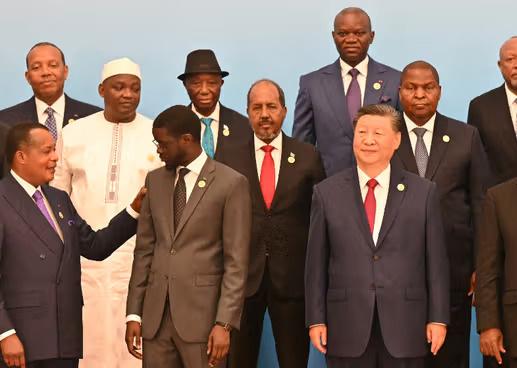
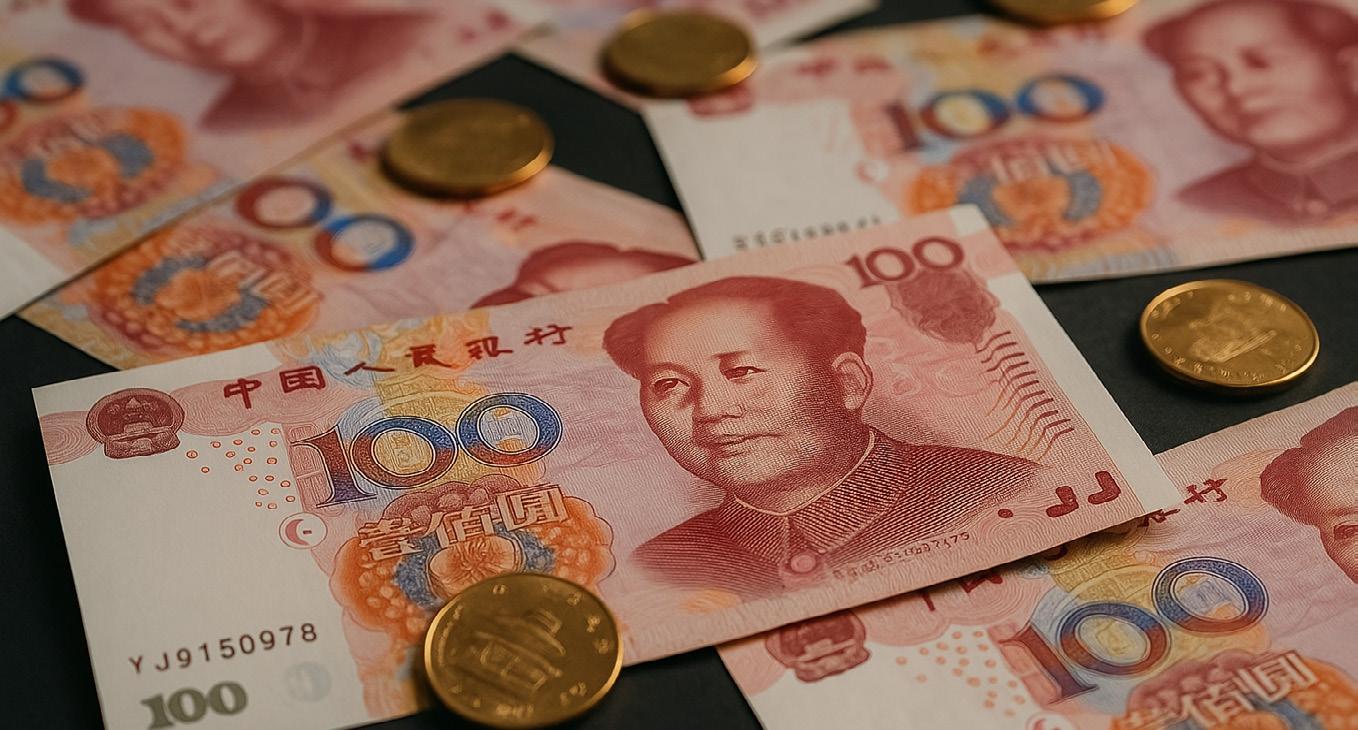
The dollar has long served as the default currency for trade and reserve holdings across the continent. Yet, it also exposes countries to currency volatility, capital flight and the whims of US monetary policy — especially when the Federal Reserve raises interest rates, sending shockwaves through emerging markets.
By contrast, yuan-based arrangements are often tied to direct trade deals, concessional loans or development finance packages from China. That gives Beijing leverage, but it also presents African states with a less punishing alternative to the dollar.

According to Nairobi-based economist Bernard Ayieko, the rise of the yuan could offer long-term benefits if managed correctly. Writing in Business Daily, Ayieko argued that ‘the adoption of yuan will boost the ability of African states to attract new investments and trade favourably on the global market.’
He contends that the renminbi’s 2016 entry into the IMF’s Special Drawing Rights basket of reserve currencies — alongside the dollar, euro, pound and yen — legitimised China’s monetary ambitions. Now, African countries are starting to respond with policy shifts of their own.
‘The call to internationalise the renminbi continues to reverberate across the world. African countries are mulling the need to use the renminbi as a reserve currency and a medium of exchange in international settlements,’ said Ayieko.
There is growing speculation that Africa could become a testing ground for China’s broader monetary rebalancing. With BRICS expanding and China-Russia financial ties deepening, the Global South is becoming more assertive in questioning Western dominance of global finance.
In this context, Africa’s role is no longer passive. By incorporating yuan into their central banking systems, countries like Egypt, Nigeria and Angola are helping lay the groundwork for a multipolar currency order.
For China, this has both symbolic and practical value. Africa allows Beijing to showcase the yuan’s flexibility while also promoting infrastructure projects, digital payment platforms and local currency swap lines that tether African economies closer to its orbit.
Egypt’s adoption of UnionPay — now set to expand across more banks and merchants — is emblematic of this approach. It extends Chinese fintech standards into Africa’s consumer and retail space, while simultaneously reinforcing state-level financial integration.
Ayieko argues this kind of move is strategic for Africa too. ‘By adopting the yuan as a reserve currency, African countries will trade smoothly at both bilateral and multilateral levels because it will be easier to make international transactions between many countries that require diverse currencies for financial settlements,’ he said.
Yet for all the benefits touted, Africa’s yuan embrace is not without risks. Overdependence on China’s financial systems — including CIPS and bilateral swap lines — could expose countries to the same vulnerabilities they face with the dollar, just under a different power.
There is also the concern of debt diplomacy. Critics warn that linking trade, finance and reserve holdings too closely with China could leave African states beholden to opaque loan terms or subject to currency risks if the yuan’s value fluctuates.
Moreover, the yuan remains only partially convertible on global markets, and China's capital controls limit its utility as a truly global currency. As such, countries that shift their reserves heavily into yuan might find themselves constrained if they need liquidity outside of Chinese trade channels.
Still, the momentum appears to be on Beijing’s side. With a growing number of African countries aligning their financial infrastructures with China’s, the yuan’s role as a medium of trade, a payment settlement currency, and potentially a reserve currency, is no longer theoretical.
What is unfolding between China and Africa is not merely a trade story — it is a currency story. As the yuan gains traction on the continent, it signals a deeper recalibration of Africa’s place in the global financial order.
If the 20th century was defined by dollar dominance, the 21st may witness the rise of competing centres of monetary gravity — and Africa could play a pivotal role in shaping what comes next.
Egypt’s recent move may be a ‘key step’, as Governor Pan put it, but it also marks the crossing of a financial Rubicon. The yuan has landed in Africa — and it is not just passing through.
DONALD Trump’s second presidency is reshaping the contours of American foreign policy — and nowhere is this more evident than in Africa. This month’s meeting in Washington between Trump and five African heads of state may have begun with awkward moments and diplomatic missteps, but it quickly revealed the former real estate mogul’s uncompromising vision for the continent: ‘We’re done with handouts. Let’s make deals.’
For years, US engagement with Africa has centred on aid: humanitarian relief, HIV/AIDS programmes, and disaster support. Under Trump, that era is being forcefully rolled back. His administration has shuttered the US Agency for International Development (USAID), cut billions in aid, and replaced aid-based diplomacy with what it calls ‘commercial diplomacy’.
‘Africa is open for business,’ Trump reportedly told the assembled leaders, while praising mineral access and potential golf courses over democracy or development. While some African governments are eager to engage, others are alarmed — especially as the costs of this new approach begin to bite.
The linchpin of this strategic shift is the concept of ‘commercial diplomacy’, unveiled in detail by US Assistant Secretary of State for African Affairs Troy Fitrell during a May speech in Abidjan, Cote d’Ivoire. According to Fitrell, American ambassadors across Africa will no longer be measured by the success of social programmes or humanitarian projects. Instead, their performance will hinge on how many deals they close and how effectively they promote American private sector interests on the continent.
The change is seismic. Since 2024, USAID had provided over $12 billion in humanitarian support to Africa — covering food security, disease control, and emergency relief. Much of that has
now vanished. In its place, the Trump administration is pursuing bilateral commercial agreements, infrastructure investment deals, and access to Africa’s vast natural resources.
Washington argues that this is a winwin: Africa gets investment and jobs, while the US gains strategic access and markets. But African critics say the reality is more complex — and potentially more damaging.
So far, the numbers look promising — at least on paper. In Trump’s first 100 days, the US secured 33 trade agreements valued at $6 billion. An additional $2.5 billion in pledges followed at the USAfrica Business Summit in June. The deals span a range of sectors: grain storage and data centres in Angola, renewable energy in Rwanda and Sierra Leone, and tourism development in Ethiopia.
But observers note that these figures tell only part of the story. The surge in trade agreements has coincided with sweeping new tariffs on African goods. The South African government has been particularly vocal, warning that the 30 percent tariffs imposed on its exports to
the US — especially in automotive and agro-processing sectors — threaten to undo decades of industrial progress.
The National Association of Automotive Component and Allied Manufacturers estimates that vehicle exports to the US have plunged by over 80 percent. With more than 100,000 jobs tied to the auto industry, the stakes are existential.
‘These tariffs strike at the heart of our industrialisation agenda,’ said the South African Automotive Business Council. ‘It’s a direct contradiction to the notion of mutual trade.’
The pain is not limited to South Africa. Lesotho, one of Africa’s smallest economies, declared a state of disaster after its textile industry — a critical source of employment for women — was hit with a 50 percent duty. Some 12,000 jobs are now at risk, with Washington granting only a temporary 90-day tariff pause.
In Madagascar, vanilla exporters say they’ve seen contracts cancelled. In Cote d’Ivoire, cocoa traders have warned that new US levies could disrupt supply chains and force a shift toward Asian markets.


Nigeria’s oil exports — once a major staple of US-African trade — have also been affected, as Washington prioritises domestic production and imposes tighter quotas.
From port cities to rural farms, the fallout from Trump’s policy is already being felt — and the uncertainty is fuelling discontent.
For many African governments, the emerging trade relationships appear heavily skewed in favour of the United States. Washington’s interest in lithium, cobalt, rare earths, and uranium is no secret — nor is its desire to outflank China’s dominance in Africa’s mineral supply chains.
During the summit, African leaders including those from Niger, Namibia and Zambia reportedly offered increased access to critical mineral reserves in exchange for investment. While such deals offer shortterm revenues, critics fear they could lock African countries into a new dependency cycle — one where raw materials are extracted, exported, and refined abroad, offering little value addition or job creation at home.
‘This isn’t trade, it’s resource extraction with better PR,’ said Ndumiso Mthembu, a Johannesburg-based policy analyst. ‘We’ve seen this before — just with different flags.’
Adding to the uncertainty is the looming expiry of the African Growth and
Opportunity Act (AGOA). First passed in 2000 and renewed in 2015, AGOA offers duty-free access to the US market for thousands of African goods. But it expires this September — and so far, there is no clear path to renewal.
In public, Trump administration officials like Fitrell have expressed support. But behind closed doors, they have signalled a desire to shift away from AGOA’s unilateral benefits toward more reciprocal trade deals that demand concessions from African governments.
‘Reciprocity is the new baseline,’ Fitrell said, calling on African leaders to lobby Congress and embrace ‘modern trade realities’.
For many African officials, this represents a fundamental break with the spirit of AGOA — which was designed to be an asymmetrical trade preference scheme recognising Africa’s structural disadvantages. South Africa’s trade minister has warned that continuing AGOA under Trump’s conditions would be ‘very difficult, perhaps impossible’.
As Washington pulls back on aid and complicates trade, Beijing is doubling down on both. In June, China announced it would extend zero-tariff treatment to 53 African countries, undercutting the US both in rhetoric and reality.
China-Africa trade hit $282 billion in 2024, with Beijing financing ports,
highways, industrial parks and digital infrastructure across the continent. And while critics question China’s debt-driven development model, many African leaders see it as more predictable — and less punitive — than Washington’s shifting priorities.
But the geopolitical game is delicate. Aligning too closely with China risks drawing Trump’s ire, and several African economies already face secondary sanctions or trade penalties for maintaining defence or tech cooperation with Beijing.
‘We are not pawns,’ said Kenya’s former trade minister, Betty Maina. ‘Africa must not be forced to choose between global powers. We need partners, not patrons.’
Ironically, Trump’s emphasis on trade echoes longstanding African demands. Since the Lagos Plan of Action in 1980, African governments have called for a shift away from aid dependency toward sustainable trade and industrial growth.
But African leaders are also clear: trade must be fair, and investment must lead to local development. They want technology transfer, infrastructure funding, manufacturing partnerships — not just raw material extraction or one-sided deals.
The African Continental Free Trade Area (AfCFTA), launched in 2021, offers a continental framework for this vision. The AfCFTA is designed to boost intra-African trade, develop regional value chains, and reduce reliance on external partners. Trump’s new policy risks undermining that momentum if African economies are forced to choose bilateral deals over regional integration.
Trump’s ‘trade not aid’ doctrine has shaken the foundations of USAfrica relations. For some, it offers a long-overdue shift towards economic pragmatism. For others, it represents a rollback of decades of partnership in favour of short-term gain.
Either way, the message is clear: the US no longer sees itself as Africa’s benefactor. It wants to be a competitor — one that negotiates hard, prioritises profit, and offers few guarantees.
For Africa, the challenge is to assert its agency — to negotiate from a position of strength, protect its industries, and insist that any future engagement delivers real, long-term value.
Whether that vision is compatible with Trump’s transactional worldview remains to be seen.
Jon Offei-Ansah examines whether Italy’s much-publicised Mattei Plan marks a genuine shift in Euro-African relations—or merely repackages old promises with fresh branding
ITALY is trying to rewrite the story of Europe’s relationship with Africa. Through the Mattei Plan, launched by Prime Minister Giorgia Meloni in January 2024, Rome is seeking to shift its engagement from one defined by aid and asymmetry to one rooted in partnership, co-investment, and strategic alignment. But lofty intentions have long characterised Europe’s overtures to Africa—what sets this plan apart, and can it succeed where others have faltered?
At its core, the Mattei Plan is structured around six key pillars: education, health, agriculture, water, energy, and infrastructure. Its stated goal is ambitious— to foster a new era of cooperation based on mutual respect, shared benefits, and longterm development goals. And the stakes are high. In an era defined by geopolitical flux, climate crises, and digital transitions, Africa is no longer a peripheral concern—it is the centre of the global future.
Unveiling the nearly $6 billion plan during the Italy-Africa Summit, Prime Minister Meloni stated: ‘The Mattei Plan is not just about economic collaboration; it’s a commitment to sustainable development, a shared future for Italy and Africa.’ She positioned the initiative not only as a tool
for fostering economic links but also as a means of turning Africa into a crucial energy hub for Europe while addressing the root causes of African emigration.
The launch of the Mattei Plan coincided with the inaugural ItalyAfrica Summit in Rome, attended by representatives from over 50 African countries. The turnout signalled significant interest among African leaders in alternative models of partnership— especially those that move beyond extractive logic and offer equitable growth.
But early reactions were mixed. Observers noted that the plan repackaged older Italian development projects with little fresh funding. Others criticised the slow pace of implementation and a topdown approach that appeared to sideline African voices and institutions. Even within Italy, there was scepticism about whether the government could marshal the political will and financial resources to deliver on such a grand vision.
Still, something shifted when the Mattei Plan was strategically tethered to the European Union’s €150 billion Global Gateway initiative. This alignment gave the Plan a more muscular backbone, embedding it within Europe’s broader
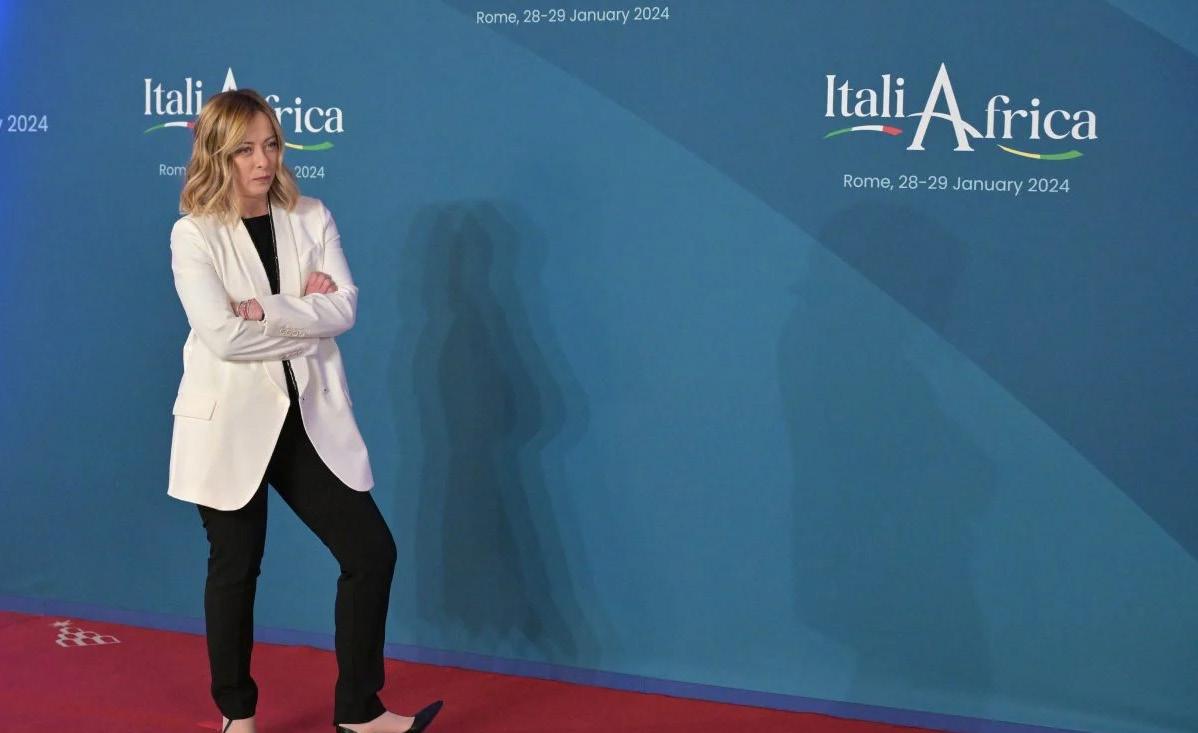
effort to counterbalance China’s Belt and Road Initiative and address Africa’s vast infrastructure and energy deficits.
Projects that point to potential
Several projects already under way showcase the practical reach of the Mattei Plan. Among the most high-profile is the Lobito Corridor, a €600m transport infrastructure project connecting Angola, Zambia, and the Democratic Republic of Congo to international markets via road and rail. The corridor is not merely logistical—it is geopolitical, enabling landlocked economies to export key minerals and agricultural goods through Atlantic ports.
Then there is the TERRA Initiative, a €113m programme designed to build climate-resilient agri-business value chains. It aims to support local farmers and SMEs in adapting to extreme weather patterns and degraded soil while linking them to global markets.
On the energy front, the RISE platform has mobilised €132 million to accelerate renewable infrastructure investments, with a focus on solar and wind. Italy is also supporting the Blue Raman Cable, a 11,700-km subsea fibre-optic network that will dramatically improve digital connectivity between Europe, Africa, and India.
Perhaps most futuristically, the G7 AI Hub for Sustainable Development— another Mattei Plan component—will train young African developers and policymakers to design AI systems tailored to the continent’s needs, from digital governance to agritech and health diagnostics.
Beyond infrastructure, the Mattei Plan includes a novel approach to development finance. Italy has proposed converting €235 million in African debt into local development investments, with the potential to double that amount over time. Meloni has even suggested cutting the debt burden of low- and middle-income African nations by 50 percent, contingent on transparent and results-oriented governance.

In her remarks following the summit, Meloni highlighted the plan’s primary sectors of focus: ‘The Mattei Plan covers five critical sectors: education and training, health, energy, water, and agriculture. Our primary focus is on agriculture, recognising its pivotal role in the plan’s success.’
These moves indicate a broader strategic pivot. Italy is signalling that it does not wish to compete with China or Russia purely on capital—but on terms, values, and agility. While Beijing continues to dominate the infrastructure landscape and Moscow expands its reach in energy and defence, Rome wants to become a partner of choice for African nations navigating an increasingly multipolar world.
To this end, Italy is forging partnerships not just with African states, but also with Gulf sovereign funds and institutions like the African Finance Corporation (AFC), which manages over $1bn annually and has already committed €250m to the Lobito Corridor. This triangulated diplomacy could add resilience and depth to the plan’s implementation.
The African Development Bank (AfDB) has voiced its support for Italy’s strategic push. During the summit, AfDB President Akinwumi Adesina stated: ‘The Mattei Plan fits into the priorities of the Bank, known as the High 5s. You can count on the African Development Bank as your partner of choice.’
Adesina underscored that the Bank’s High 5 strategy—which prioritises power, food, industrialisation, integration, and quality of life—aligns with Italy’s new framework: ‘This plan aligns with the High 5s, our strategic priorities focusing on power, food, industrialisation, integration, and improving the quality of life for the people of Africa.’
This alignment, both rhetorical and financial, marks a potential inflection point in Italy’s Africa diplomacy. Unlike past European interventions, which often operated through bilateral, donor-led models, the Mattei Plan is showing signs of institutional convergence and African ownership.
Despite these advances, critics remain cautious. Civil society groups warn that the Mattei Plan risks falling into the same traps as previous European schemes: elite-centric design, opaque financing, and insufficient accountability. Many African analysts argue that unless African governments, local businesses, and citizen voices are at the centre of planning and oversight, the Mattei Plan could become another well-branded failure.
This scepticism is warranted. Africa is not short on plans. What it lacks is consistent delivery, fair financing, and governance frameworks that prevent external dominance and local disenfranchisement. For the Mattei Plan to gain legitimacy, it must cede space to African leadership—not just invite participation.
That includes allowing African actors to help set priorities, define outcomes, and co-own project risks and rewards. It also requires transparency mechanisms, climate safeguards, and human rights protections that are enforceable and not simply aspirational.
One reason the Mattei Plan matters is that Africa itself matters—more than ever. With its abundant critical minerals, untapped energy potential, and booming youth population, Africa is fast becoming a driver of global growth. From cobalt to solar, from AI innovation to green hydrogen, Africa will help determine how the 21st century economy is powered, structured, and governed.
The continent is already central to Europe’s energy security. In the wake of the Ukraine war, EU countries have accelerated efforts to diversify gas supplies, with Algeria, Libya, and Mozambique playing critical roles. But Italy wants to go further—transitioning from fossil fuel interdependence to long-term green collaboration.
Yet the energy transition cannot replicate past models of extraction and inequality. If Africa merely exports raw materials without processing or capturing value, the continent will remain locked in the same structural position. The Mattei Plan offers an opportunity to change that—but only if investment is matched by industrial strategy, technology transfer, and skills development.
For the Mattei Plan to succeed, it must become more than a foreign policy talking point. It must function as a mechanism that redirects capital, builds institutions, and empowers African communities to shape their own futures.
Success would mean African cities with clean, smart transport networks powered by local solar grids. It would mean smallholder farmers using climate-resilient seeds and digital tools to access global markets. It would mean debt relief deals that fund hospitals, schools, and innovation hubs— not just line the pockets of elites. And it would mean young Africans trained in AI and blockchain—not to serve Silicon Valley, but to build the backbone of a sovereign digital future.
These are not pipe dreams—they are possible, but only if the Mattei Plan stays grounded in partnership, not paternalism.
The Mattei Plan may not be perfect, but it reflects a real attempt by Italy to break from the transactional frameworks that have dominated Euro-African relations for decades. By aligning with EU ambitions, embracing innovative finance, and investing in the sectors where Africa seeks transformation, Rome is taking a calculated bet that cooperation—not coercion—is the future.
The question is not whether the Mattei Plan can work in theory, but whether its execution will match its narrative. If done right, it won’t merely mark a shift in Italy-Africa relations—it could reshape the global development architecture.
In a century shaped by energy, climate, and demography, Africa is not just part of the story. It may well be the centre of it. AB
Formal savings rise in sub-Saharan Africa, but digital gaps and gender disparities persist, says Global Findex 2025
AQUIET financial revolution is unfolding across sub-Saharan Africa. Mobile money is rapidly transforming how people save, spend and survive. According to the World Bank’s Global Findex Database 2025, 35 percent of adults in the region saved formally in 2024—one of the highest regional rates globally and a sign of deepening financial inclusion. But as access grows, so too do concerns over inequality, security and systemic gaps.
Across much of the world, formal savings are still dominated by banks. Not in sub-Saharan Africa. Here, the mobile phone is the new bank branch. Most adults who saved formally in 2024 did so via mobile money accounts rather than traditional institutions. Senegal leads the pack, where formal savings jumped from 46 percent in 2021 to 67 percent in 2024.
The shift reflects Africa’s unique leapfrogging of infrastructure barriers. While other regions integrate mobile into existing banking systems, Africa is building from the ground up—mobile-first, branchoptional.
Yet challenges remain. Despite the gains, men remain seven percentage points more likely than women to save formally. The gender gap is narrowing but still persistent.
Formal saving isn’t the only area seeing dramatic change. Digital payments— especially those to merchants—have surged across the continent. In 2024, 42 percent of sub-Saharan African adults made digital merchant payments, up from 35 percent in 2021. Kenya, Cameroon and other economies saw usage more than double.
This shift matters. Digital payments are safer, faster and leave behind a usable financial trail. For small businesses, this data can unlock credit and fuel expansion. As World Bank President Ajay Banga put it: “Digital finance can convert this potential into reality,” citing the Bank’s support for digital IDs, modern payment systems and smarter regulation.
Yet credit access remains a weak link. In low- and middle-income countries, only a quarter of adults used formal credit in the past year. In sub-Saharan Africa, informal borrowing—mainly from family or friends—still dominates. Among the selfemployed, business loans remain rare and typically informal.
This gap signals a missed opportunity. With the right products and policy support, cash flow data from digital payments could underpin responsible, accessible lending models.
Mobile money is helping millions—but not all. The Findex 2025 report warns of a stark digital divide. About 50 percent of adults in sub-Saharan Africa who don’t have financial accounts also lack mobile phones. That’s nearly 80 million people cut off from the region’s dominant form of financial access.
The biggest barrier? Cost. Mobile devices remain unaffordable for many. While giving away free phones seems like an easy fix, research shows recipients often lose access or struggle to maintain usage. Sustainable models—low-cost devices,
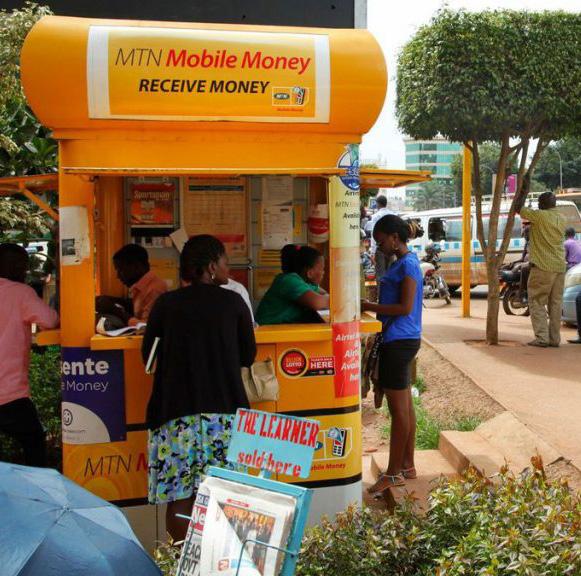
shared access points, or community hubs— are needed.
Rapid digitisation also brings new risks. Only about half of mobile money users in sub-Saharan Africa use passwords or PINs to secure their phones—exposing millions to theft and scams.
Globally, women are less likely than men to secure their devices. And nearly one in five adults in low- and middle-income countries reported receiving scam messages asking for money. Few fell for them—but the threat is rising.
Governments must act. Regulators need to enforce consumer protection across telecom and financial sectors. That includes requiring secure device access, clear fee structures, better onboarding and education campaigns.
As Bill Gates, Chair of the Bill & Melinda Gates Foundation—co-funder of the Findex—noted: “More people than ever have the financial tools to invest in their futures. This is real progress. But there’s
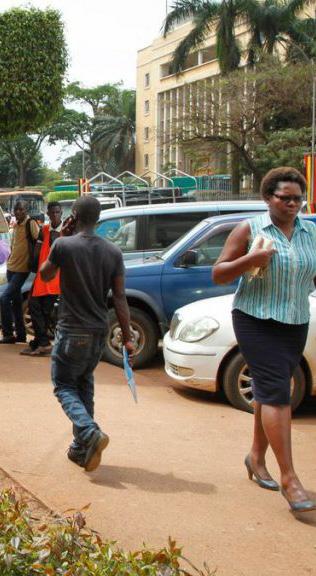
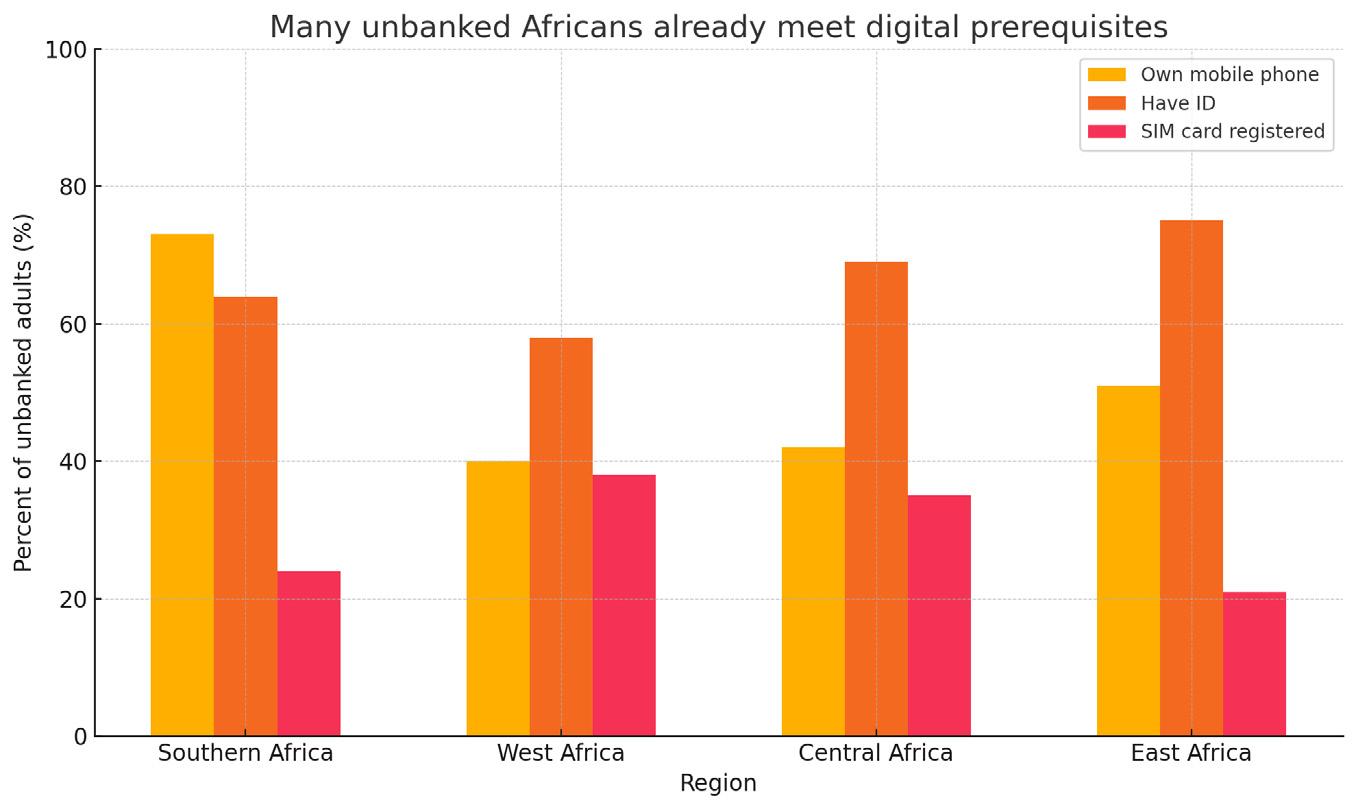
still work to be done to make systems safer and more inclusive.”
Even with broader financial access, economic vulnerability remains high. Just 56 percent of adults in low- and middleincome countries could access emergency funds within 30 days—unchanged since 2021. In sub-Saharan Africa, most households can’t cover more than a month’s expenses after income loss.
The data reveals fragility. Many adults—especially farmers and informal workers—live one shock away from financial ruin. Yet targeted financial products, such as micro-insurance, health savings and weather-based lending tools, remain rare.
In a region prone to climate shocks and economic disruptions, the need for resilience-focused financial design is urgent. The opportunity is clear, but so is the responsibility.
The report highlights a promising group: the digitally connected but financially excluded. In sub-Saharan Africa, about 80 million adults without financial accounts own a mobile phone, have valid ID, and hold a registered SIM card. This group could quickly be onboarded into digital finance—if the products are affordable, user-friendly and relevant.
Farmers, in particular, stand to benefit. Ninety million unbanked adults in Sub-Saharan Africa receive agricultural payments in cash. Digitising these payments could help them save during surplus periods, access insurance, or borrow at planting season. Yet many remain offgrid and underserved.
Governments can also play a catalytic role. Five percent of unbanked adults receive government payments in cash. Routing these through digital accounts would not only promote inclusion but reduce leakages and improve transparency.
What would it take to close the remaining gaps? The Global Findex 2025 outlines a roadmap: strengthen consumer protections, improve financial literacy, promote digital infrastructure and support inclusive product innovation.
Crucially, the next wave must be equity-led. Women, rural populations, and the poorest households need tailored approaches—low-fee accounts, simple interfaces, agent-based services, and trustbuilding measures.
And while digitalisation unlocks efficiency, the human touch still matters. Agent networks, community education and local partnerships can help new users build confidence and avoid digital pitfalls.
Sub-Saharan Africa’s digital finance journey is a remarkable story of innovation, adaptation and progress. Mobile money has moved from novelty to necessity, enabling millions to save, transact and dream.
But inclusion cannot be left to technology alone. It must be intentional— shaped by policy, protected by regulation, and driven by user need.
As Ajay Banga reminded us: “Digital finance can convert this potential into reality.” That future is within reach—but only if the region invests just as boldly in resilience, education and inclusion as it has in technology.
The Central African nation has issued its first online gaming licence, setting its sights on becoming a trusted hub for digital betting in Africa while reducing reliance on oil revenues, Jon Offei-Ansah reports
EQUATORIAL Guinea has taken a major step toward economic diversification by granting its first-ever online gaming licence to Cyprusbased Mascott Capital Partners. The government confirmed the decision late July on its official website, signalling its ambition to compete with leading gaming jurisdictions in Europe and Africa while building a secure, transparent digital betting market.
This landmark move is part of the Horizon 2035 sustainability strategy, designed to reduce the nation’s heavy dependence on oil exports by opening new channels for foreign investment, job creation, and fiscal stability. The government hopes that regulated online gambling will help attract reputable international operators and strengthen its standing in the global digital economy.
The licence, numbered 0107 LE025 BN, authorises Mascott Capital Partners to operate online gaming, betting, and casino services across Equatorial Guinea. It was granted under Law No. 2/1995, which regulates recreational gaming, and Law No. 10/2017, which sets out new tax and parafiscal levies for the sector.
Officials say the framework has been crafted to meet international standards, requiring licence holders to adopt strict anti-money laundering controls, conduct independent audits, and guarantee the protection of player funds. Operators must also ensure robust age verification systems, publish transparent bonus rules, and provide responsible gambling messages to safeguard vulnerable users.
Mascott Capital Partners welcomed the partnership, describing it as a milestone in responsible investment. ‘We are proud to collaborate with the Ministry of Tourism

and Tourism Infrastructures to consolidate this alliance,’ the company said. ‘It reflects our philosophy of operating ethically in high-potential emerging markets while supporting Equatorial Guinea’s vision for shared economic growth under Horizon 2035.’
Globally, remote gaming is dominated by jurisdictions such as Malta, Gibraltar, and the Isle of Man, where clear regulations, investor-friendly tax regimes, and strong consumer protections have helped create thriving industries. In Africa, only a handful of countries—including South Africa, Nigeria, and Kenya—have introduced regulated online gambling markets.
By granting this first licence, Equatorial Guinea hopes to become Central Africa’s first fully regulated digital gaming hub. Analysts say the move is also a strategic response to unregulated offshore gambling platforms that target African players without paying local taxes or providing adequate safeguards.
‘If Equatorial Guinea can enforce its rules, process applications efficiently, and offer a competitive tax environment, it could become a serious contender in Africa’s regulated gaming space,’ said one industry observer. ‘It’s an opportunity to attract legitimate operators looking beyond crowded European markets.’
Horizon 2035 outlines the government’s ambition to transition from an oil-reliant economy to one driven by diverse and sustainable industries. Digital services are seen as a pillar of this transformation, with online gaming expected to generate new streams of tax revenue, create local jobs in technology and customer support, and promote knowledge transfer in a growing sector.
Mascott Capital Partners says it is committed to raising national gaming standards in partnership with authorities. ‘This initiative will foster a culture of excellence and innovation, driving regulatory practices toward best-in-class international norms,’ the company said.
Industry experts note that success will hinge on regulatory stability and effective enforcement. The government must demonstrate that only compliant, financially sound operators can enter the market while rogue platforms are swiftly shut out. This credibility is crucial if Equatorial Guinea is to compete with more mature markets in South Africa and fast-expanding jurisdictions such as Nigeria.
Officials are expected to release a list of Mascott Capital Partners’ authorised agents and approved international gaming partners in the coming months. If the programme runs smoothly, Equatorial Guinea could position itself as a trusted, forwardlooking player in Africa’s online gaming landscape, rewriting its global image from an oil producer to a tech-savvy, digitally connected nation.
By signalling openness to regulated investment and innovation, Equatorial Guinea is making a calculated bet: that the digital economy—anchored by a transparent online gaming sector— could be its next big growth engine.
As the continent’s merchants accelerate digital transformation, the recent assault on the computer networks of two of the UK’s biggest retailers should serve as a crucial case study on what can go wrong when uptime – not just data – is under attack
IN April, the notorious Scattered Group unleashed a massive cyberattack on two British stores, M&S and the Co-op, leading to substantial financial losses, operational disruptions and compromised customer data. M&S suffered losses of £300 million due to the attack, with supply chains affected for weeks. On top of the direct losses, over £1 billion was stripped from the organisation's market value.
Similarly, the Co-op experienced data breaches affecting customers’ personal information, while Harrods reported attempted cyberattacks, but managed to maintain online operations.
“These attacks aren’t just about stolen data,” says Anna Collard, SVP of Content Strategy & Evangelist at KnowBe4 Africa. “They took whole systems offline. In retail, downtime is a critical threat – it affects sales, customer trust and brand loyalty, instantly.”
Unlike traditional ransomware gangs, Scattered Spider is decentralised, native English-speaking and highly adaptive. “Scattered Spider aren’t mere opportunistic hackers,” explains Collard. “They operate more like well-funded, well-organised crime syndicates.”
With some members as young as 19, they coordinate their activities on platforms like Discord and Telegram. “They’re agile, patient and disturbingly good at blending in,” she says. Added to this, they have great expertise in human psychology, as showcased during their attacks on Las Vegas casinos in 2023.
Their primary weapons, therefore, are not just digital – they are human. “They’ve mastered social engineering,” says Collard. “They specialise in exploiting human trust. From vishing [voice phishing] to impersonating internal staff and triggering what’s referred to as ‘MFA fatigue’; they’re skilled manipulators who understand both systems and people.”
MFA fatigue is one of the growing tactics they are known for which involves triggering repeated multi-factor authentication (MFA) prompts, hoping the bombarded employees eventually click “approve” just to make the interruptions stop.

Another alleged tactic Scattered Spider used in its latest attacks involved calling IT helpdesks to reset credentials, gaining access to their target’s infrastructure and subsequently deploying a ransomware-asa-service tool. The outcome? Encrypted systems, stalled operations and a long road to recovery.
Retailers across Africa – particularly in South Africa, Nigeria and Kenya – are digitally transforming at a rapid pace. Cloud-based POS systems, centralised inventory platforms and data-driven loyalty programmes are now standard. But these digital advancements also expand attack surfaces.
High employee turnover, remote workforces and under-resourced helpdesks can compound exposure. And while business English is common in South Africa, this linguistic advantage also makes local teams more susceptible to social engineering by fluent English-speaking attackers.
“Our local executives aren’t naïve,” Collard notes. “Many are acutely aware of the risks. What’s needed now is clarity on what really matters – and cutting through the noise.”
Pepkor IT’s CISO, Duncan Rae, delivered an insightful talk at the ITWeb Security Summit in May where he warned that cybersecurity teams are often overwhelmed – not just by threats, but
by too many competing priorities. Teams are bombarded with shiny, new tools and threat reports spreading fear, uncertainty and doubt (FUD) which sometimes makes organisations lose sight of the basics, he warned.
“These basics include managing human risk, addressing third-party exposure, and hardening vulnerabilities,” says Rae.
Collard points to gaps in access controls, third-party risk management and cloud security as common weaknesses –not just in the UK, but globally. “Legacy systems, shadow IT and poorly enforced policies create entry points,” she warns. “Attackers don’t need to break in if they can just log in.”
For African retail leaders, this is a call to fortify the human layer.
“Train your frontline teams, especially in helpdesk and customer support. Teach them to detect manipulation. Make secure behaviour the norm – not the exception.”
Equally important, she says, is embedding cybersecurity into leadership conversations. “Cybersecurity is not just an IT function. It’s a board-level business risk. Executives must ask tough questions about readiness, incident response and accountability.”
Too often, security training is treated as a box-ticking exercise. Collard urges a more thoughtful approach. “Training must resonate. It should be contextual, culturally relevant, and delivered in local languages where appropriate.”
She challenges business leaders with the following: could an attacker trick your helpdesk into a password reset? Would your staff recognise a social engineering attempt? Do you test these scenarios regularly?
“If the answer is ‘no’ to any of these, your organisation is vulnerable,” Collard says. “But the good news is that change is possible – and fast – when you start investing in the human element.”
“Cyber resilience is a collective responsibility,” she concludes. “And in an interconnected world, learning from each other’s crises is one of the smartest defences we have.”


